

HATCHET
Total contributions to GW dropped $25.6 million in FY2024, tax forms show
GIANNA JAKUBOWSKI ASSISTANT NEWS EDITOR
Total contributions and grants to GW dropped roughly 26 percent in fiscal year 2024, with non-governmental donations falling 41 percent, coinciding with activist-led campaigns to withhold funding at the onset of the war in Gaza.
Contributions and grants totaled $74 million in FY2024, down from $99.6 million the previous fiscal year, according to GW’s tax filings for July 2023 through June 2024. The form also reveals that GW’s non-governmental donations — which includes gifts from families, alumni and faculty and are reported on the form as fundraising events, noncash contributions and all other contributions, gifts and grants — fell just over 41 percent, from $88.7 to $51.9 million.
The drop in non-governmental donations coincided with an academic year defined by calls from both pro-Palestinian and pro-Israel community members for the University to better address campus activism following Hamas’ Oct. 7, 2023, attack on Israel and the ensuing war in Gaza, along with alumni threats to withhold donations if officials failed to respond adequately.
The drop also concurred with the 13-day pro-Palestinian
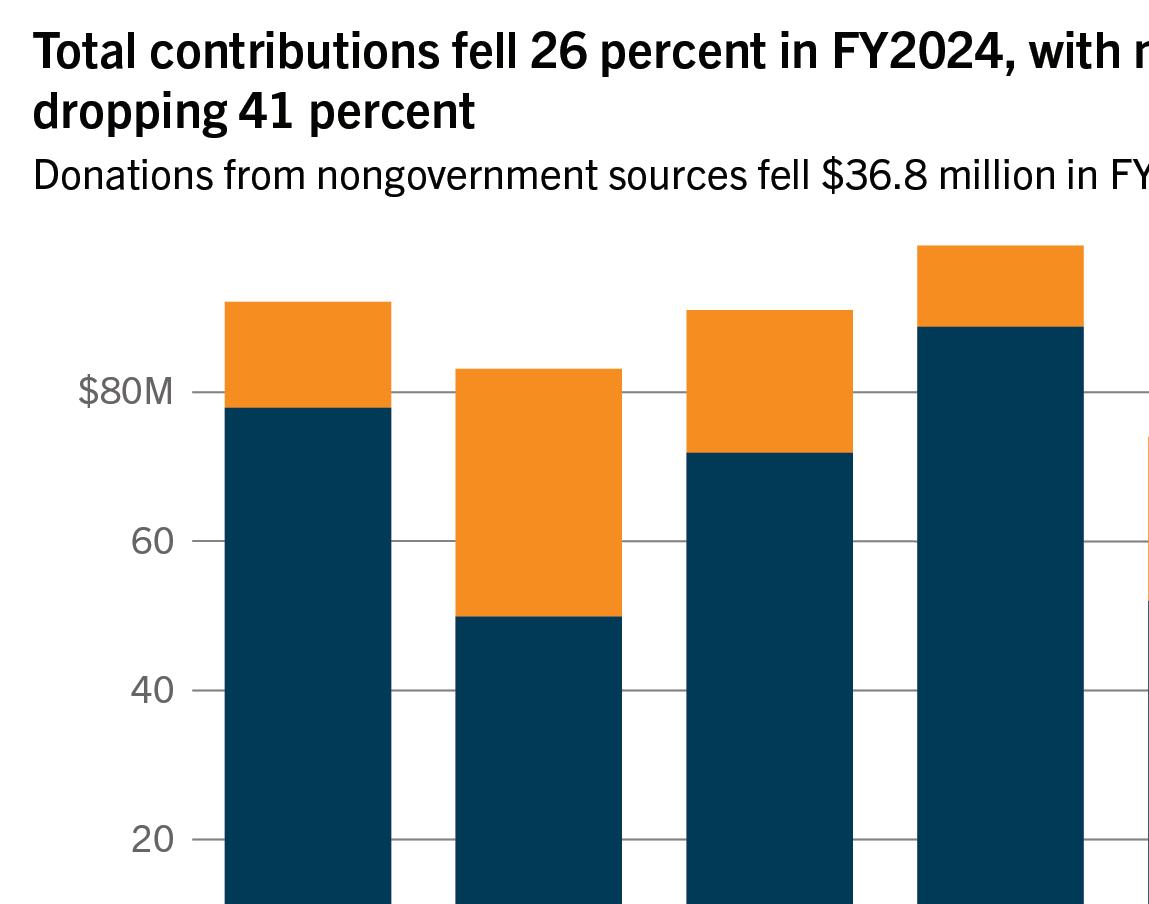

encampment protesters staged in University Yard in April 2024, where demonstrators called on GW to disclose and divest from companies with ties to Israel, among other demands.
University spokesperson Shannon McClendon declined to comment on whether officials attributed the drop in contributions and gifts to calls from pro-Palestinian protesters urging community members
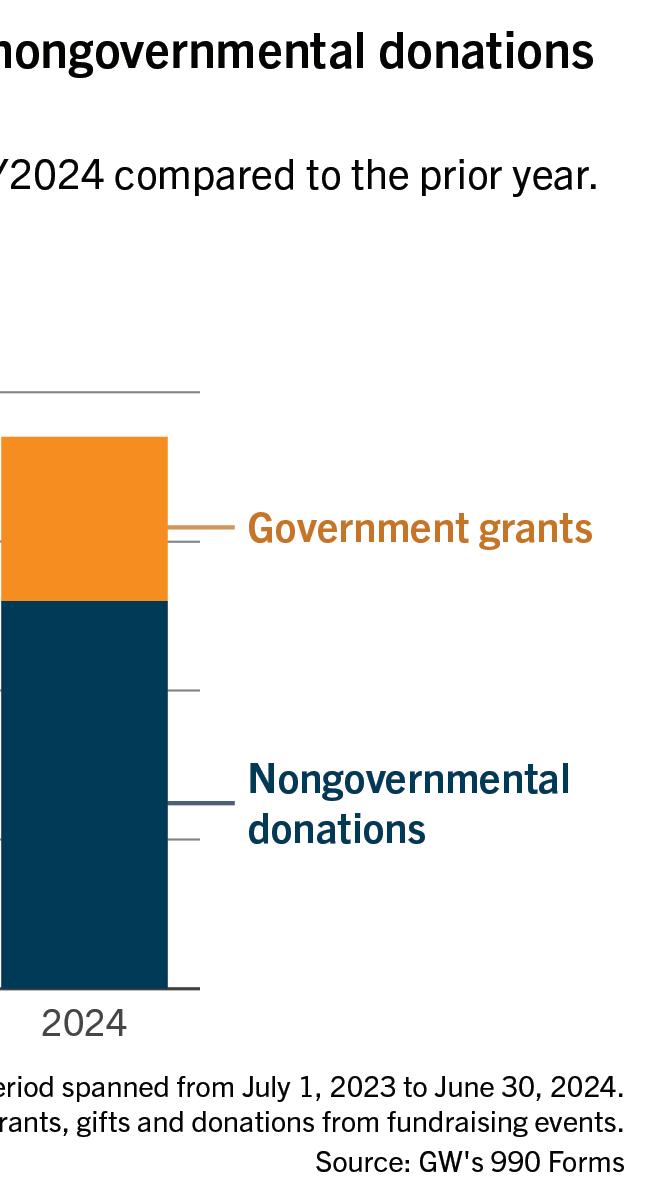
and graduates to withhold donations, as well as threats from Jewish and pro-Israel alumni to pull or withhold gifts.
GW’s Form 990, which annually reports the University’s revenues and expenses, reveals School of Medicine & Health Sciences Dean Barbara Bass was the highest compensated employee at the University from January 2023 to December 2023 and received the second-
highest bonus out of any University employee in the past 10 years. The form also shows that two former officials — former School of Nursing Dean Mei Fu, who resigned after two months at the University, and former Chief Financial Officer Mark Diaz, who left in June 2022 — received over $700,000 in severance payments.
Officials ‘in contact’ with DOJ after investigation finds GW deliberately indifferent to campus antisemitism
RYAN
SAENZ ASSISTANT NEWS EDITOR
As the Friday deadline passed for GW to indicate interest in a voluntary resolution agreement with the Justice Department over its antisemitism investigation findings, a University spokesperson confirmed that officials are “in contact” with the department. The acknowledgement that GW is communicating with the DOJ followed the department’s Aug. 12 conclusion that the University violated Title VI of the Civil Rights Act by acting deliberately indifferent to reports of campus antisemitism. In a letter addressed to University President Ellen
Granberg, Assistant Attorney General for Civil Rights Harmeet Dhillon said the DOJ will enact “enforcement” measures against the University “in the near future” unless they enter into a voluntary resolution agreement, which they gave officials until Friday to indicate interest in. Dhillon in the letter told officials to contact the department by Friday if GW is interested in “a dialogue” about entering a voluntary resolution agreement. The spokesperson declined to comment on whether GW indicated interest in a resolution agreement but said officials have “worked diligently” to combat antisemitism on campus and will review these actions with the DOJ. The DOJ declined to comment on whether GW expressed interest
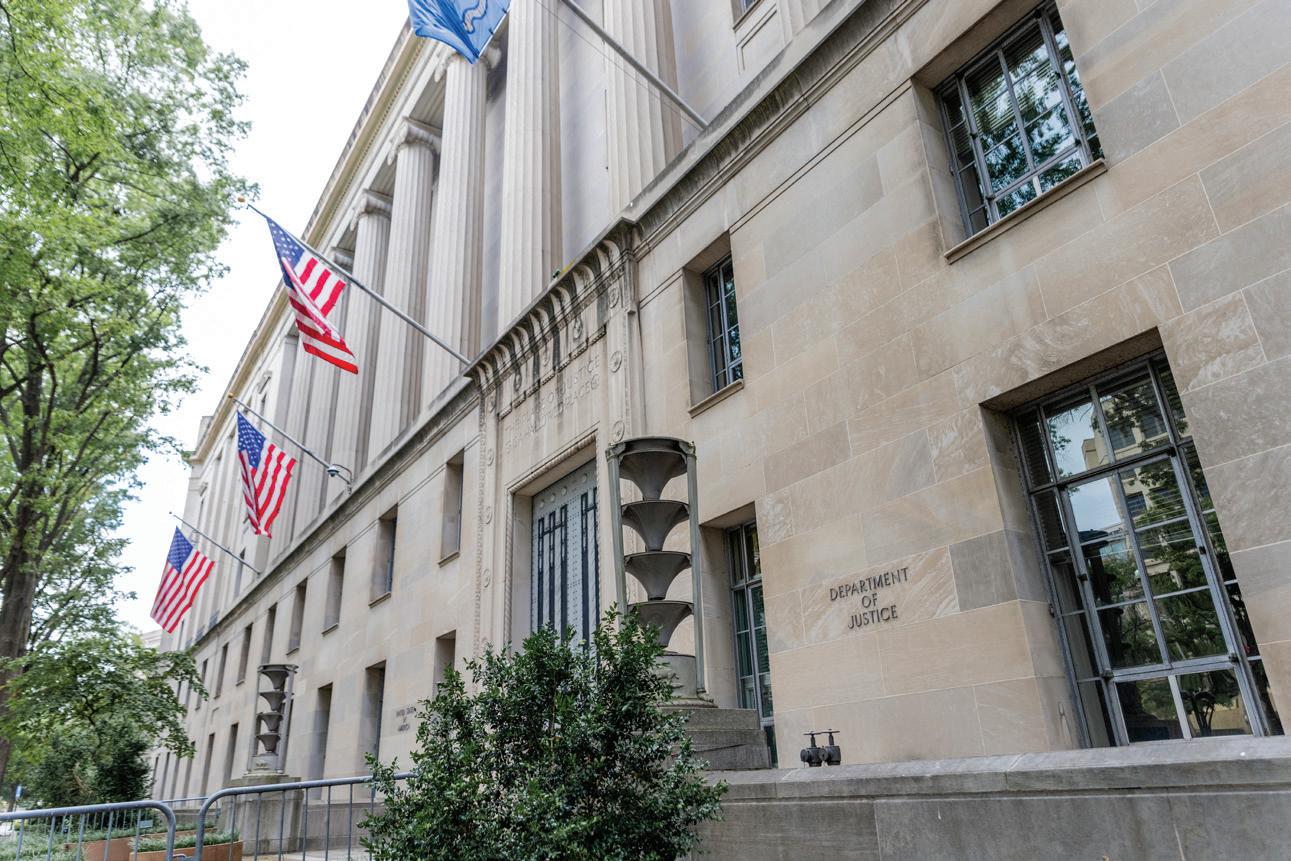
in entering a voluntary resolution agreement by the Friday deadline. The department also
Fraternities expand fall rush eligibility to
first-year students
RYAN SAENZ
ASSISTANT NEWS EDITOR
GW’s fraternities will recruit firstyears during the fall semester for the first time since 2017.
The Interfraternity Council, the body that oversees social fraternities at GW, announced the change for eight of the nine chapters in an Instagram post earlier this month. IFC President Trex Jones said the council and each of its nine member chapter presidents made the decision to expand eligibility in order to provide more rush opportunities for first-year students who want to join Greek life, with the options to rush in the spring and in the fall now available to firstyears.
The IFC said in the post that firstyears can only rush for eight of its nine member fraternities, except Sigma Alpha Epsilon. The IFC declined to comment on why the eligibility shift does not apply to SAE.
In 2017, a task force — including Greek and non-Greek affiliated students, parents, faculty and staff — recommended the University add a requirement that students must complete 12 credits before joining any Greek life on campus, which the Division for Student Affairs then implemented. Then-Director of Student Life and Greek Life Christina Witkowicki
said the shift was made to allow time for first-year students to acclimate to campus before joining Greek life.
The only exception to the policy came in the wake of the COVID-19 pandemic in fall 2021, when officials temporarily lifted restrictions during the 2021-22 academic year to help firstyear students better acquaint themselves with GW’s campus following a year of social isolation. The shift applied to all Greek life chapters that hosted formal recruitment, mostly social fraternities and sororities in the IFC and Panhellenic Association.
University spokesperson Skyler Sales said officials support the IFC’s decision to permit fall rush for firstyears. She said Greek life councils and individual fraternities and sororities have their own specific eligibility requirements, like GPA minimums, but all potential new members must also complete requirements set by the Division for Student Affairs, including an online module on fraternity and sorority life and a registration process, a policy that has been in place in years past.
“Allowing first semester students to participate in recruitment or intake can have a positive impact on their student experience, provided that councils and chapters have a well-developed and intentional recruitment process,” Sales said in an email.
declined to
on what “enforcement” measures against GW could look like.
The opening of the Chickfi l-A in Mitchell Hall, initially set for Monday, is uncertain after plumbing and equipment issues caused the restaurant to fail its health inspection earlier this month.
The Chick-fi l-A garnered five violations during a D.C. Department of Health’s preoperational health inspection on Aug. 5. University spokesperson Julia Garbitt declined to comment on what specific steps officials are taking to remedy the issues or provide an updated timeline for the Chick-fi l-A’s opening, which has faced several delays since officials initially projected its opening for Fall 2024.
“The University is working to resolve plumbing and building issues as quickly as possible, and once rectified, will be able to open the Chick-fi l-A,” Garbitt said in an email.
The inspection found one priority violation, two priority foundation violations and two core violations. The violations are too serious to allow

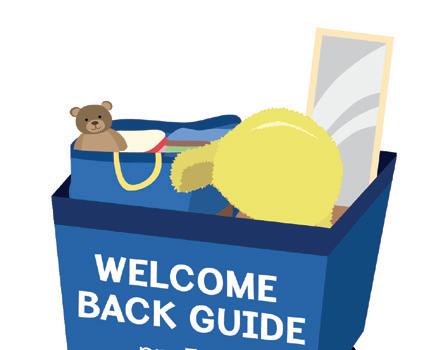


Students for
Justice in Palestine disaffiliates from GW amid further sanctions
Students for Justice in Palestine disaffiliated from the University after officials suspended the group through spring 2027, marking their second sanction in the past four months.
Officials revoked SJP’s organization status through spring 2027 for disorderly conduct related to the group’s push to fire economics professor Joseph Pelzman, University spokesperson Katelyn Deckelbaum confirmed. The sanction comes on the heels of officials’ April decision to suspend the organization through spring 2026 for an outcome violation and prompted the group to disaffiliate from GW, according to a member of SJP who requested anonymity for fear of retaliation from the University.
Deckelbaum said Conflict Education and Student Accountability received a report on Feb. 25 of physical posters targeting a faculty member. She said CESA subsequently investigated a social media post and postering by the organization and entered into conduct proceedings with the group.
Pelzman authored and sent to President Donald Trump a plan proposing the economic redevelopment of the Gaza Strip, which prompted SJP in February to demand that GW fire him. Pelzman’s plan called for mass excavation of Gaza and the creation of a “sovereign demilitarized green economy” in the territory.
As a part of their petition for officials to fire Pelzman, SJP posted photos on Instagram from anonymous students showing about 20 “notice of eviction” flyers strewn around his office door in Monroe Hall.
Deckelbaum said the group underwent a panel-level process, one of two typical conduct processes available to students and organizations, and officials offered them the opportunity to appeal the decision. SJP did not appeal the decision.
The member of SJP said the organization disaffiliated so the group doesn’t waste time undergoing conduct proceedings and can instead focus on pressuring University officials to end financial support for companies tied to the war in Gaza and not resist capitulating to Trump.
“Because SJP has never consistently received the privileges extended to other student organizations – including funding and the ability to book space on campus – we are choosing to disaffiliate from GW, and we’re doing so because it will allow us to be more active in combating Zionism on campus,” the member said in an email.
In April, University officials suspended SJP after the group hosted an event without advisor approval in March. Officials required that the organization receive adviser approval for all on-and-off-campus events as a part of their sanctions from the conduct proceedings after the April 2024 pro-Palestinian encampment in University Yard.
The SJP member said CESA first contacted the organization about their new conduct charges in early April.
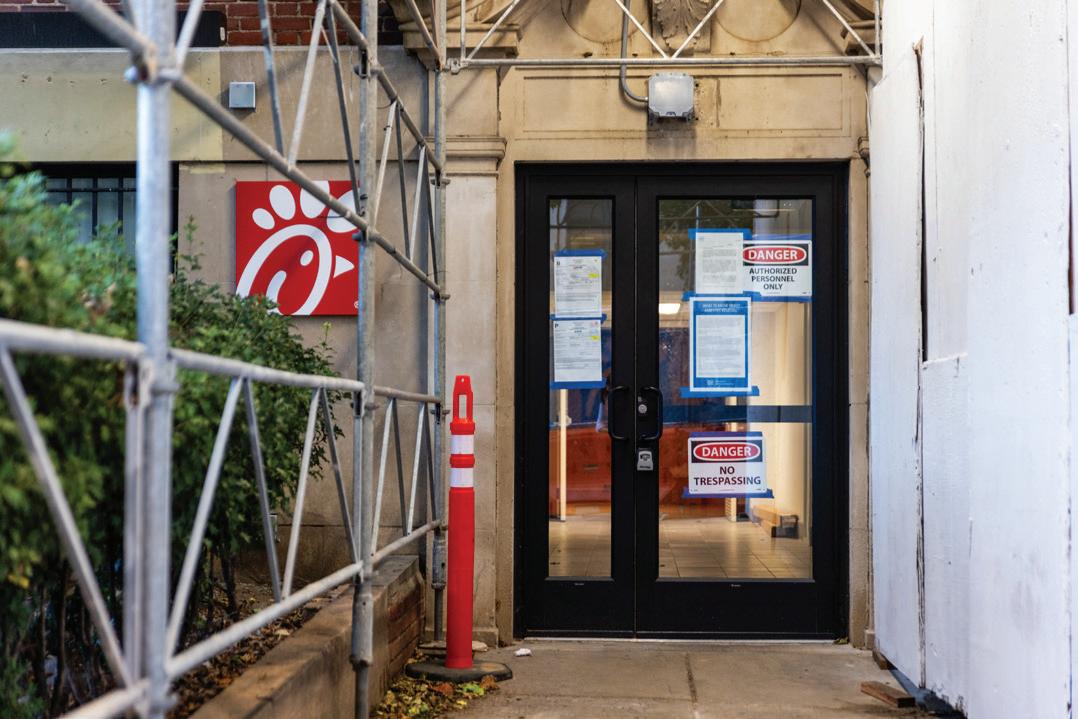
the restaurant to open and must be remedied and reinspected before the department permits the Chick-fi l-A to open, per the health inspection report. According to D.C. Health records the department has not yet reinspected the restaurant. The department determined that the mop sink lacks a backflow preventer — a required piece of plumbing to prevent sewage backflow
into the kitchen area. The report states that the Chick-fi l-A must install a new plumbing system, which prevents the backflow of contaminants into the water supply system before it will be cleared to open. GW fi rst announced plans to open a Chick-fi l-A in Mitchell Hall in February 2024, and construction began that summer with a projected Fall 2024 opening, but the project hit several delays, pushing the opening date to this year.
See GRANBERG Page 4
comment
GRAPHIC BY AN NGO
ELIJAH EDWARDS CONTRIBUTING NEWS EDITOR
RYAN SAENZ ASSISTANT NEWS EDITOR
LEXI CRITCHETT | ASSISTANT PHOTO EDITOR
The entrance to the Chick-Fil-A in Mitchell Hall.
LEXI CRITCHETT | ASSISTANT PHOTO EDITOR
The Department of Justice on Pennsylvania Avenue.
CRIME LOG
THEFT II/FROM BUILDING
Duques Hall Reported – 8/14/2025
Open Case
A female GW staff member reported alcoholic beverages stolen from the office pantry. Case open.
THEFT II/BICYCLES
2300 Block, H Street NW
8/14/2025 – 5:15 to 5:30 p.m.
Open Case
A non-GW affiliated man reported their bicycle stolen off the mount on the rear of their car. Police obtained an image of the suspect riding the bicycle away from the scene of the crime. Case open.
THEFT
I/FROM MOTOR VEHICLE, UNLAWFUL ENTRY OF A MOTOR VEHICLE
2100 Block, I Street NW
8/19/2025 – 3:08 a.m.
Open Case
A female GW student reported personal belongings stolen from her car. A person was seen pulling on car doors near the location of the incident. Case open.
STALKING
JBKO Hall
8/20/2025 – Multiple
Open Case
A female GW student reported being the victim of stalking by her former boyfriend, who is also a GW student. Referred to Title IX Office.
—Compiled by Bryson
Kloesel
Student, faculty, alumni groups urge GW to resist settling DOJ antisemitism investigation
RYAN SAENZ ASSISTANT NEWS EDITOR
As Friday’s deadline for officials to indicate interest in reaching a voluntary resolution agreement with the Department of Justice over its finding that officials acted deliberately indifferent to campus antisemitism neared, student, faculty and alumni groups condemned the investigation and called on GW to rebuff an agreement with the DOJ.
Since the DOJ’s Civil Rights Division announced the investigation’s finding on Aug. 12, some pro-Palestinian and Jewish student organizations denounced the investigation as an unfounded attack against higher education, demanding the University not enter into a voluntary resolution agreement, while others expressed some support in the investigation’s findings of unaddressed antisemitism on campus. Social media posts have trickled in from organizations over the past two weeks as the University and Justice Department have remained quiet on whether or not GW has indicated interest in entering into a voluntary resolution agreement, as the Aug. 22 deadline set in the DOJ’s letter comes and goes.
A University spokesperson said GW is “committed” to combating antisemitism and has worked to seriously address it across campus but declined to comment whether or not the University indicated interest in having a dialogue about an agreement with the DOJ by the Friday deadline.
“We have been in contact with the Department of Justice and look forward to reviewing with them the extensive actions the University has taken to combat antisemitism and all forms of discrimination on campus, and to ensure every GW student is able to access educational opportunities without intimidation or fear,” a University spokesperson said in an email.
The DOJ declined to comment on the department’s next steps, whether
Officials push Class of 2029 to lead with curiosity, empathy at Convocation
University officials charged the Class of 2029 and transfer students to find their passions, explore new possibilities and dedicate themselves to service during their time at GW at the annual Convocation and Welcome Day of Service ceremony in the Smith Center.
University President Ellen Granberg, Interim Provost John Lach, Dean of Students Collette Coleman and student speaker Brooke Moses encouraged the incoming students to use their curiosity and work ethic to make a difference by supporting their peers, contributing to campus life and engaging in service projects across the District during their time at the University. About 2,200 students attended the ceremony and following Welcome Day of Service, according to Amy Cohen, the executive director of the Honey W. Nashman Center for Civic Engagement and Public Service.
Granberg said although new students will discover that GW is an institution “tied to history” through the University’s namesake, George Washington, and its location in D.C., the institution itself is not stuck in the past.
“GW is constantly evolving, remaking itself, not only to meet the challenges of our changing world but also to meet you where you are,” Granberg said.
Granberg said GW students are “strivers, dreamers and doers” who choose to launch their educational journey in the nation’s capital rather than a small college town in the “rolling hills in middle America.”
She added that GW has more graduates working on Capitol Hill than any other college in the United States and that the new students are in “impressive company” with other GW alumni.
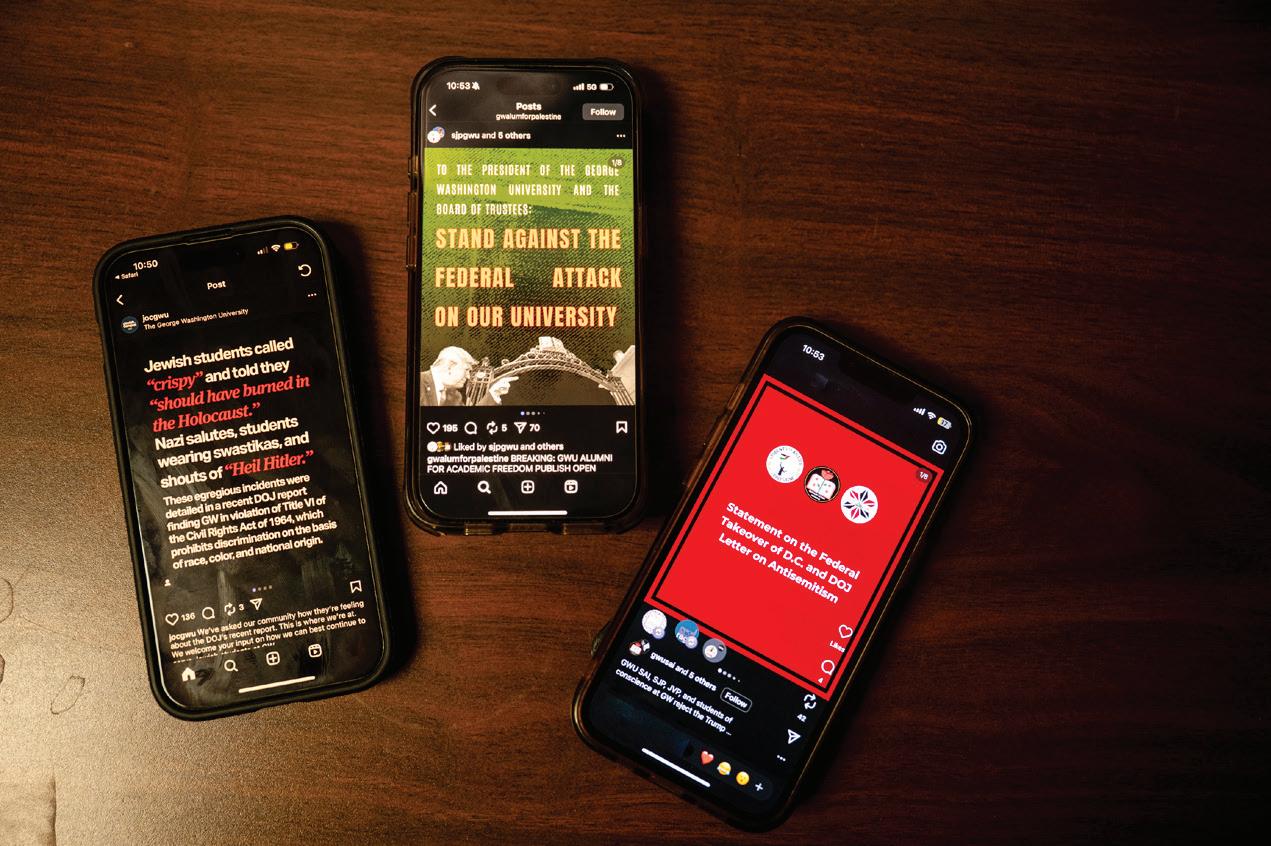
the University contacted them and if they will pursue enforcement action against GW.
J Street U at GW, which supports peace and a shared future for Israelis and Palestinians, said in an Aug. 14 Instagram post that the investigation mirrors other attempts from President Donald Trump’s administration to subvert both academic freedom and free expression on college campuses.
The post argued silencing speech on campus deepens the divide between students, adding to campus discourse about the ongoing war in Gaza that can be “polarized and judgemental.”
“Criticism of Israel is not inherently antisemitic, and restricting pro-Palestinian speech does not make any college student safer,” the post reads.
In a Thursday letter penned by the “GWU Left Coalition,” which includes Students for Justice in Palestine, Jewish Voice for Peace, Socialist Action Initiative and the Student Coalition for Palestine at GWU, students of those groups urged officials not to enter into a voluntary resolution agreement with

“This is your time and your place to explore, to read widely, to ask bold questions and to honor your curiosity just because,” Granberg said. “You have the time and space to discover what fuels your passion and the support to follow it where it leads.”
The annual Welcome Day of Service is an opportunity for students to volunteer at organizations around D.C. for the day, taking part in activities ranging from wiping windows and decorating bulletin boards at local elementary schools to cleaning up outdoor spaces with shovels and rakes. Students served at 62 sites, 38 of which were D.C. schools, according to Cohen.
“The Nashman Center would like to thank everyone who participated on Welcome Day of Service,” Cohen said in an email. “We appreciate the site captains and leaders and the logistics volunteers and all of the first year and transfer students who made this a successful day.”
This year’s Convocation and Welcome Day of Service marks the second year in a row the events were held during orientation
week, following a sparse turnout in 2023 when officials moved Convocation to about a month into the fall semester. This year’s attendance marks the highest in at least three years, when only 800 of 2,500 incoming first-years attended in 2023.
Lach, who assumed the role of interim provost in June following former Provost Chris Bracey’s departure after four years in the role, welcomed students to GW’s “community of scholars.” He said administrators, faculty, staff and students work together to create a University environment where everyone feels respected for who they are and has an opportunity to succeed.
“We ensure individuals and groups with different perspectives, identities and lived experiences are respected and included,” Lach said.
Coleman reminded students of GW’s five core principles — community, critical thinking, curiosity, empathy and exploration — and encouraged students to “hold fast” to these values during their time at the University and after they graduate. She said she and
GW officials are committed to creating a campus where students “listen deeply” to opposing viewpoints and value others’ lived experiences.
Brooke Moses, a senior majoring in exercise science who won GW student employee of the year for community service in 2024, said involvement beyond the classroom makes a college degree not just a “credential” but a legacy of citizenship and leadership. She said during times of adversity in her life, contributing to others’ well-being and volunteering her time helped her find direction and remain grounded at GW.
Moses said although she achieved many accomplishments during her time at the University, she did not complete them alone but with the help of friends, faculty and staff. She urged the students sitting before her to build their own support networks and dedicate themselves to helping others.
“We believe service is community in action. We believe in building something bigger than ourselves,” Moses said.
the DOJ because it will set a “dangerous precedent” of capitulating to Trump.
The DOJ investigation centered on incidents that took place during the 13-day pro-Palestinian encampment in University Yard in April 2024, which the four organizations participated in.
“These attacks on students’ rights at other universities demonstrate the imminent danger to student safety and privacy at GW should our administration fold,” the letter reads. “As these unconstitutional attacks knock on our university’s door, we urge GW to hold its ground and fight the Trump administration’s demands.”
The coalition provided a list of demands for the University, including rejecting federal interference in University functions, banning Immigration and Customs Enforcement officers from campus, guaranteeing University practices don’t discriminate against those engaged in activities “disfavored” by the government, increased engagement with those on campus about law enforcement on campus and making use of GW’s financial systems to protect students, faculty and staff
Faculty, students seek transparency in next provost as national search begins
GIANNA JAKUBOWSKI ASSISTANT NEWS EDITOR
Two weeks after GW launched its nationwide search for the next provost, student and faculty leaders say they hope the University’s next chief academic officer prioritizes clear communication amid challenges in higher education.
Student leaders and faculty said they feel hopeful about the search for a new provost and stressed the importance that the new leader should protect the University’s current resources, build on its foundation and lead GW in the right direction, especially as the executive branch works to reshape the higher education landscape, and officials grapple with budget constraints. As the University conducts its search for the next chief academic officer — who officials expect to be in office by the start of next academic year — GW selected former School of Engineering & Applied Science Dean John Lach to serve as interim provost following former Provost Chris Bracey’s resignation in June.
University President Ellen Granberg announced in an email to the community earlier this month that she had begun GW’s search for a new provost and appointed a search committee of representatives from all colleges, key governance partners and her leadership team.
Fifteen members of the provost search committee, excluding members of the University’s executive leadership, declined to comment on what they are looking for in GW’s next provost, deferred their comment to the University or did not return a request for comment.
University spokesperson Shannon McClendon said officials are looking for a leader with “distinguished
scholarly achievement” committed to academic excellence, student success and community engagement as they guide the University’s academic mission and advance its priorities outlined in the newly approved strategic framework that is set to launch this fall. She confirmed officials expect the GW’s next provost to take office before August 2026. The provost is responsible for guiding GW’s overall academic enterprise and directly supervises the University’s 10 schools and colleges, institutes, museums and administration divisions. The provost also oversees the recruiting, hiring and advancement of GW’s more than 2,800 faculty members.
McClendon said the role of the search committee is to help develop the job posting, evaluate candidates and make recommendations to Granberg, while consultant and former Lehigh University President John Simon will advise the search.
Denver Brunsman, associate professor and chair of the Department of History, said a strong candidate for the provost would be someone with a strong academic background with knowledge of running a university. He said GW’s next provost should know how faculty should be treated and have budgetary and political knowledge to protect the University’s mission and resources, given the uncertainty in higher education that could cause low morale.
“Part of the challenge for the next person will be to build on the foundation that exists and in the current environment, trying to protect what we have and our research funding, our endowment and other resources at the University,” Brunsman said.
KAIDEN J. YU | STAFF PHOTOGRAPHER
University President Ellen Granberg speaks to students at Convocation and Welcome Day of Service in the Smith Center on Saturday.
PHOTO ILLUSTRATION BY ARWEN CLEMANS Organizations condemn the Department of Justice's investigation into GW in Instagram posts.
International enrollment dip to reduce diverse perspectives: program heads
Academic department leaders and graduate degree program directors said the past couple years’ trend of declining international student enrollment could lead to less diverse perspectives in classes and strain the University’s budget overall.
Vice Provost for Enrollment and Student Success Jay Goff said during the Faculty Senate’s August meeting that international undergraduate student enrollment is expected to decrease a half percent this academic year and that international students are the only student demographic that has seen a decline in enrollment for the upcoming academic year, citing new immigration policies, like the Trump administration’s travel bans and visa delays as reasons for the drop. Department leadership and program directors said declining international student enrollment could impact the rigor of classroom discussions by decreasing the number of viewpoints and potentially strain the University’s budget.
In 2019, 1,416 international undergraduate students and 2,515 graduate international students attended the University. In 2024, 794 international undergraduate students and 2,548 graduate international students attended the University, a 44 percent decrease in undergraduates and a 1 percent increase in graduates, according to enrollment data.
Goff said at the August meeting the drop in international students is expected to decrease the University’s revenue this year by around $10 million, as international stu-
dents often receive little financial aid and pay full tuition.
University spokesperson Claire Sabin said GW has increased “engagement activities” to support students through new visa procedures but did not specify how the University plans to expand support measures.
“We are continuing to monitor how new immigration policies, visa processing delays, heightened security measures, and the increasing attractiveness of other countries or study destinations are contributing to any projected declines in the new international student enrollment,” Sabin said in an email.
The Trump administration issued a temporary pause on interviews for all student visas from May to June and has instituted new rules like social media background checks and screening for “antiAmerican” views. The administration also implemented a travel ban on June 9, barring or restricting entry into the United States for citizens of 19 countries. The ban includes countries like Iran, which was home to 29 students, Myanmar and Venezuela, where seven students hailed from each, according to 2024 enrollment data.
Joann Weiner, the director of the master of science in applied economics program, said she has seen a drop in the number of international students enrolled in her program this semester. She said international students generally make up about two-thirds of the program. Weiner said students have emailed her asking if they can delay their start at the University because they have been unable to secure interviews for their visas.
“Many who have emailed me to ask about when can they start,
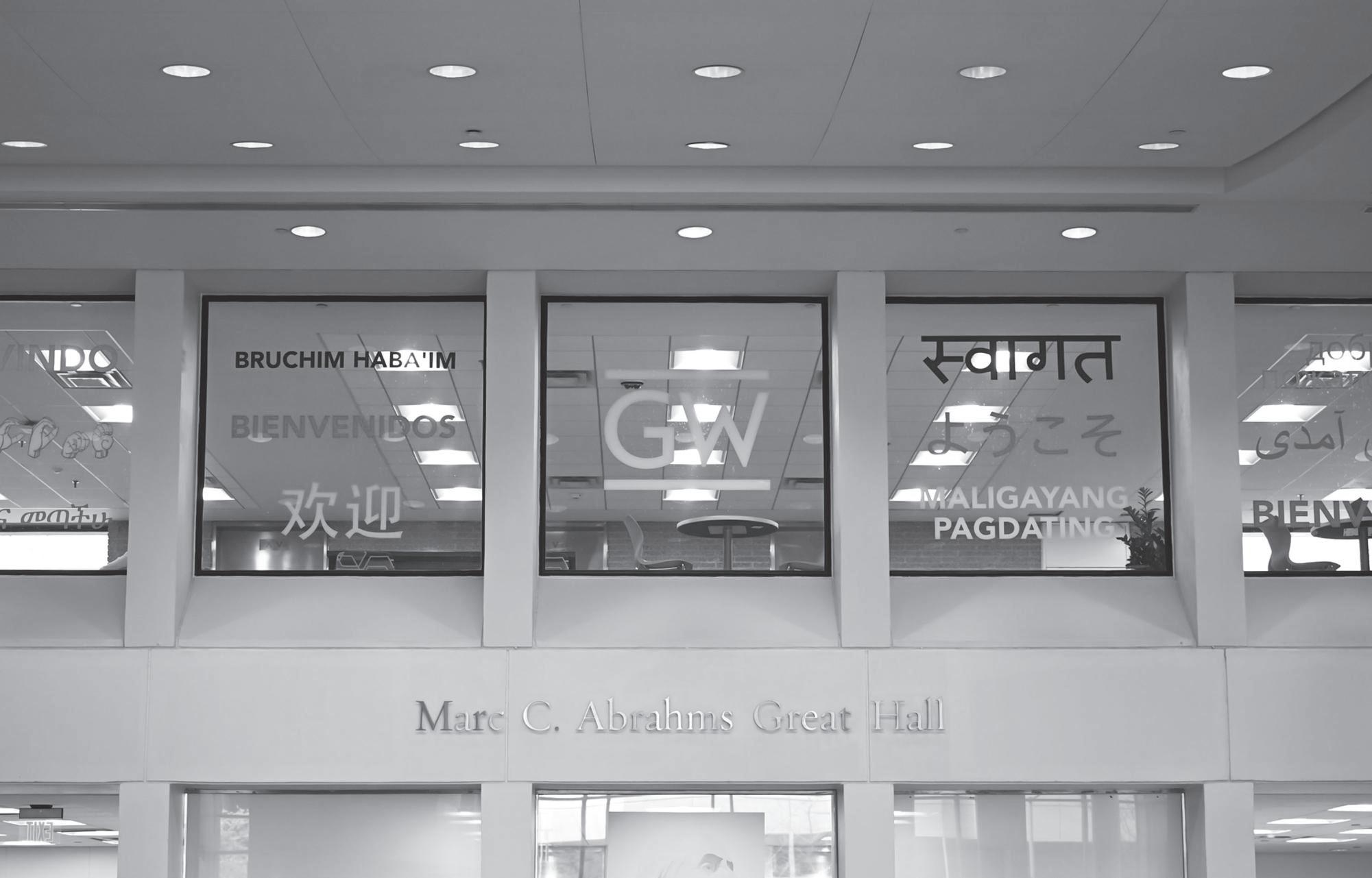
can they get a deferral to start, and many of them have not been able to get a visa appointment,” Weiner said.
University spokesperson Shannon McClendon said earlier this month that the University added asynchronous start choices to accommodate international students struggling to get visa appointments. She said, in some cases, delays may require students to postpone their enrollment to a later term.
Weiner said lower international enrollment could lead to less diverse viewpoints and a “narrower”
range of voices in the classroom.
But she added that the drop could also lead to smaller class sizes, which would allow professors to spend more time with each student’s work and get to know them better.
Weiner also said her program had many Chinese applicants before the decline of international student enrollment during the COVID-19 pandemic and that the number of Chinese students enrolled in the applied economics program never “came back” from the initial drop.
Denver Brunsman, the chair
of the history department, said international enrollment in the department has stayed consistent this year, but “a few” incoming graduate students in the department have decided not to study in the U.S. due to the political climate or had to defer their enrollment to a later term because of visa issues.
“I do think that the current environment is not particularly welcoming to international students from our political leaders, so I think that makes it difficult as an institution to recruit and welcome international students,” Brunsman said.
Researchers find link between fear of hair loss, refusing cancer treatment
Researchers found some cancer patients are dissuaded from starting treatment because of a fear of hair loss and dermatological side effects, according to a study published late last month.
Adam Friedman, a professor of dermatology at the School of Medicine & Health Sciences, authored the study which was published in the Journal of Drugs in Dermatology, and found that when researchers informed patients of possible dermatological side effects, like hair loss and nail discoloration, up to one-third of patients said they would be deterred from starting treatment for all types of cancer. Friedman said the findings demonstrate that dermatological side-effects are not superficial to patients and indicate oncologists should give greater weight to dermatological factors when
designing and discussing cancer treatment plans.
“Traditionally, discussions about refusing cancer treatment focus on systemic side-effects, such as fatigue, nausea, immunosuppression, or on limited prognosis,” Friedman said in an email. “Our findings highlight that dermatologic side-effects can weigh just as heavily in decision making.”
Anticancer treatments, like chemotherapy and radiation therapy, target rapidly multiplying cancer cells to prevent their spread. These treatments can also inadvertently damage healthy cells, which can cause side effects like hair loss, diarrhea, skin rashes and fertility problems, according to the American Cancer Society.
The study, which was conducted in collaboration with researchers from Georgetown University, took responses from 77 attendees over the age of 18 at two community health fairs
in Southeast Washington D.C. 88 percent of respondents were female, 71 percent were African American and 21 percent were previously treated for cancer, according to the study.
Researchers asked respondents whether they would “definitely or possibly” accept or reject treatment — defined as any anticancer medication or radiation — or remain undecided, if dermatological side effects, like eyebrow loss, hair thinning or nail discoloration, occurred. The study aimed to determine how heavily cancer patients weigh these potential side effects when determining whether to pursue treatment.
Permanent hair loss caused the highest number of respondents to “definitely or possibly” refuse treatment at 33 percent, and temporary hair loss of eyebrows and eyelashes caused 27 percent of patients to re-
fuse treatment, according to the study. Respondents who had been treated for cancer before were less likely to refuse treatment, with only 13 percent saying they would decline anticancer therapies if permanent or temporary hair loss occurred.
“For many, these visible changes aren’t cosmetic inconveniences, they impact identity, self-esteem and daily functioning, making the treatment itself feel like another illness to endure.” Friedman said.
The study also found patients overestimated the prevalence of hair loss and dermatological side effects resulting from therapies to treat cancer, with respondents believing chemotherapy caused hair loss more than half the time, while the actual rate is between 14.7 percent and 52.1 percent, according to the study. Friedman said the lack of knowledge about these side effects means oncologists should
give patients “proactive” referrals to dermatologists, who can educate patients on the effects of their treatment plans.
“If patients understand there’s a plan to manage side effects before they start therapy, they’re less likely to see these changes as an inevitable and unacceptable trade off,” Friedman said. Friedman said his team was “inspired” to conduct the study by a lack of data on how individual perceptions of dermatological side effects influence cancer treatment decisions. Friedman said he hopes the study will encourage physicians to educate patients about dermatological concerns earlier in their treatment processes.
Anne Moyer, a professor of social and health psychology at Stony Brook University, said body image and self identity are a prominent consideration for some patients. Moyer said the fear of hair loss can be particularly
distressing for women suffering from cancer because hair can be “integral” to their sense of femininity.
“Losing one’s hair also is a visible reminder of cancer and an indicator to the outside world that one is being treated for cancer,” Moyer said in an email. Moyer said combined with the physical challenges already caused by cancer, these cosmetic side effects caused by treatment can become “debilitating” for patients’ physical and emotional functioning. She said to alleviate this, patients should be prescribed exercise and assigned to support groups to alleviate the mental stress caused by cancer and anticancer therapies.
“Support for informed decision making is useful, and this includes decision aids that help people assess their values and fully understand the short and long term implications of a treatment decision,” Moyer said.
Tariffs, rising labor costs rattle local restaurants despite I-82 rollback
Two weeks after the D.C. Council pared back a twice-voter-approved plan to phase out the tipped minimum wage, Foggy Bottom businesses say the relief is minimal as they cut staff and swap premium ingredients for cheaper ones due to tariffs, inflation and rising labor costs.
The initiative — which passed with 74 percent of the vote in a 2022 referendum — would have seen the tipped minimum wage reach parity with the regular D.C. minimum wage of $17.95 by July 2027, but on Aug. 1, the Council voted to partially repeal the initiative and maintain tipped minimum at $10 through 2026. The D.C. restaurant lobby tepidly supported the council’s decision, and while Foggy Bottom restaurateurs said the change is welcome, economic complications like President Donald Trump’s tariffs and price increases have kept pressure on already-thin profit margins.
The Council paused wage increases under the initiative in June, rejecting a provision in Mayor Muriel Bowser’s yearly budget proposal to repeal the initiative entirely. The amendment will slow tipped wage increases from once every year to once every two years and caps the increases at 75 percent of the regular minimum wage, reaching its peak in 2034 instead of 2027. Since its inception, the initiative has sparked debate between tipped worker organizers and restaurant owners about whether the benefits of a higher minimum wage for service workers outweigh the heightened labor costs that restaurant owners say could force their businesses to shutter or lay off staff. The

amendment requires the District’s Chief Financial Officer to study and report the impacts of tipped wage reform, which At-Large and Ward 6 Councilmembers Christina Henderson and Charles Allen said would be used to guide the councils in the future.
Jeremy Pollok, owner of Foggy Bottom’s Tonic at Quigley’s, said rising labor costs and inflation forced him to choose between certain premium ingredients and making a profit. He said he removed steak from the menu after the price of the meat soared so high that customers would not pay what the restaurant needed to charge to break even.
“For what I would have to charge to make a profit on it, no one was going to buy it. So in that case, we just took it off the menu,” Pollok said. Pollok also swapped out avocados for other ingredients after their price spiked, a change he attributed more to tariffs than to rising labor costs. Trump embraced tariffs on the campaign trail and began implementing them weeks into his second term. Since taking office, he has placed tariffs of historic levels on several countries, including a baseline 10 percent tariff on all foreign imports — a move the presi-
dent quickly paused for 90 days. On Aug. 7, Trump raised the U.S. average import tax rate to over 17 percent, the highest level since the Great Depression. Food imports that restaurants rely on now face tariffs ranging from 10 percent to over 50 percent depending on the country of origin. The price of steak outpaced most other grocery items last month, jumping 12 percent from this time last year. Trump backed down in April from a 25 percent tariff on avocados from Mexico, where the United States buys most of its avocados, but avocados from other countries like Peru and the Domini-
can Republic still face tariffs.
Pollok said since I-82 took effect, he has cut staff and integrated more technology to support operating with a smaller staff.
Pollok said the D.C. Council’s tweak to I-82 offers restaurants breathing room by slowing down wage increases, and he hopes it will allow other establishments in more dire financial situations to remain open.
“Hopefully a lot of restaurants that have been struggling more than Tonic will not close and will stay open,” he said. “You feel for those people who, not only the owners, but all the people who work there who end up losing their jobs.”
Gabriel Pio, the general manager at Bodega Taqueria y Tequila on I Street, said even though the D.C. Council’s decision gives small businesses time to prepare for increases, he ultimately expects increased labor costs to reduce profit margins over time, complicating financial planning and staffing.
“Your cost of operation definitely has a lot to do with labor,” Pio said. “And, moving from paying someone $10 and $12 an hour to $17, $18, it really adds up.”
Pio said he supports the initiative to raise the tipped minimum wage because restaurants should pay fair wages rather than relying on patrons to do so through tips. He also said the resulting increase in labor costs can significantly impact restaurant budgets, raise menu prices and lock some people out of the business.
“People might have to take more elements into consideration when opening a restaurant from a financial standpoint because they can’t bank on the labor being as cheap,” Pio said.
KYRA WOOD | ASSISTANT PHOTO EDITOR
The inside of Bodega Taqueria and Tequila restaurant on I Street.
TOM RATH | STAFF PHOTOGRAPHER
Multilingual greetings are pasted on the second floor windows of the University Student Center.

Six local businesses earn $4,000 in Main Street grants
RYAN J. KARLIN SENIOR STAFF WRITER
The Foggy Bottom and West End Main Street Program began dispersing $4,000 grants to local businesses on a rolling basis this month, giving owners the funds to update their store fronts, reupholster furniture and upgrade technology.
Executive Director of the Foggy Bottom and West End Main Street program Ben Sislen said the program opened grant applications in June and began dispersing money this month as applications were approved by the program’s team, with three businesses receiving the money earlier this month and three more slated to be delivered this week.
Puglisi’s Hair Cuts, Charm Thai, District Champagne, Watergate Cuts, Casey’s Coffee and AF Auto Repair all received or will receive grant funding, and several of the business owners said the $4,000 will help them complete storefront and furniture upgrades that will drive business.
The Main Street program is a District-wide initiative launched in 2002 by the Department of Small and Local Business Development, aiming to revitalize business corridors in D.C., according to the program’s website. The DSLBD partners with nonprofit organizations — like the Foggy Bottom Association, which received a $175,000 grant for
the Foggy Bottom and West End program earlier this year — to retain and recruit businesses along the corridor, improve commercial properties and attract customers, the site states.
A study conducted in 2023 by consulting firm Jon Stover & Associates concluded that the Foggy Bottom area had a higher rate of storefront vacancy compared to the rest of the surrounding city neighborhoods as businesses struggle to recover from foot traffic declines following the pandemic. The neighborhood reported a 63 percent storefront vacancy rate, with the Watergate complex alone having a 60 percent vacancy rate.
Joseph Walluck and McLean Turner, the owners of grant recipient District Champagne, said learning about the grant felt like they’d “won the lottery.”
Tucker said the grant came at a time when District Champagne, a high-end wine and spirits store on M Street, had its sights on a number of maintenance and improvement projects that were not financially feasible. With the grant money the shop has received, Tucker said the shop could purchase a new iPad, perform HVAC system maintenance and add UV protective film to cover windows from sunlight, which impacts the quality of some products.
“It kind of forced us to move ahead on these things
because we don’t have to use our money,” Tucker said. “So it’s been wonderful.”
Sislen said the program will also provide businesses with marketing and business consulting services free of charge from consultants the program hires for businesses and will be hosting community events to raise awareness of the program and bring people into the neighborhood, including a book crawl planned for Sept. 21, where local authors will read their books at six different retail locations.
Faruk Mohammad, owner of L Street grant recipient Charm Thai, said Main Street gave Charm Thai a grant to renovate the bathrooms. He added that the Main Street program will help improve the restaurant’s social media during a time when foot traffic and sales are “very bad.”
“He was helping me get the money, came in here a few times, and now he is going to use Facebook and Instagram to help me market, so I can get more business,” Mohammad said.
Hector Gaona, owner of Watergate Cuts located in the Watergate Complex, said he will be using his grant for five new barber chairs and a new window air conditioning unit.
“It’s a really big help because the situation here is not that good,” Gaona said of the Watergate Complex. “You can see all the stores are closed."
Officials adjust Student Health Center hours following SGA advocacy
ELIJAH
Officials balanced the Student Health Center’s hours for the 2025-26 academic year by creating a more consistent closing time throughout the week, Student Government Association President Ethan Lynne announced at a meeting Monday.
The Student Health Center on the Foggy Bottom Campus will now remain open from 8:30 a.m. to 6 p.m. Monday through Thursday — adjusting the center’s hours to close an hour later on Monday and Thursday and an hour earlier on Tuesday and Wednesday — after what Lynne said was “months of coordination” with SHC officials to reach the changes. The SGA also approved an amendment to the body’s constitution to add an anti-harassment provision, which students will vote on via a referendum during next April’s elections.
Lynne, who campaigned on reforming the SHC after its physicians failed to diagnose his appendicitis last year, said the adjusted hours reflect a “huge increase” in accessibility to reliable health care for GW community members.
“While this is a big win, we still have a lot of work to do, and I’m committed to continuing to work on this alongside VP Stoddard and my health policy team,” Lynne said.
The SHC previously operated from 8:30 a.m. to 5 p.m. Monday, Thursday and Friday, and 8:30 a.m. to 7 p.m. Tuesday and Wednesday during the 2024-25 academic year, according to web archives. The SHC will still close at 5 p.m. on Friday, according to Lynne. The total number of hours the Foggy Bottom center is open will not change despite the shuffled hours.
The SHC on the Mount Ver-
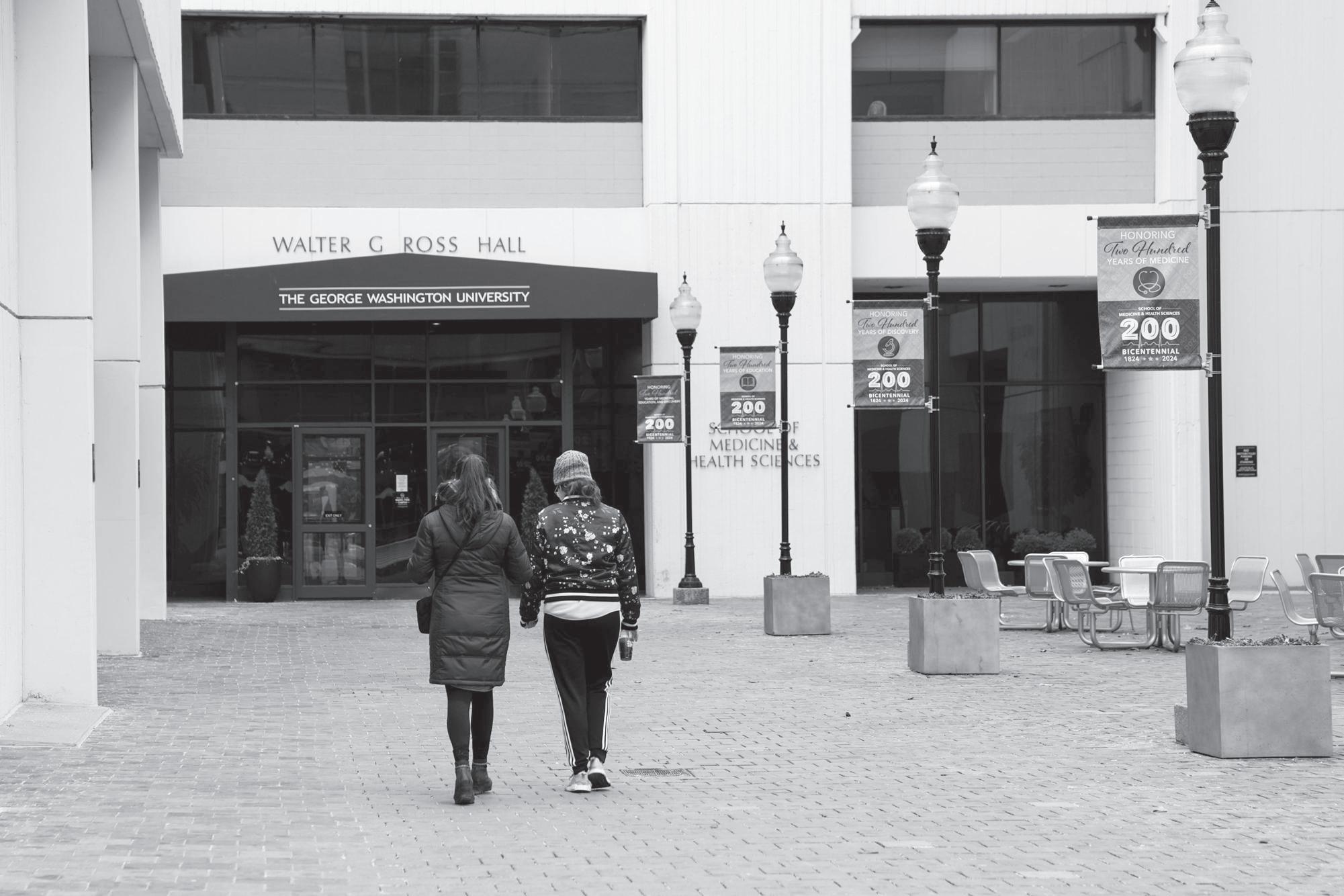
Researchers ‘unconvinced’ of new longevity drug’s ability to slow aging
AIDAN FARRELL ASSISTANT NEWS
EDITOR
Researchers from the School of Medicine & Health Sciences determined that further testing is necessary to determine if a popular anti-aging treatment is capable of prolonging longevity in humans, according to a study published this month.
The study — led by Jacob Hands, a medical student at SMHS — could not determine that rapamycin therapy, a treatment marketed to promote longevity in humans by slowing down cellular growth that has been shown to increase the lifespan of mice, delays aging in older adults. While some doctors have recommended the drug, which has increased in popularity as an anti-aging treatment in recent years, the study posits that further testing would be appropriate to determine if rapamycin should be used on humans.
“I have worked for several scientists interested in rapamycin therapy and have personally witnessed dozens of friends and relatives taking the drug,” Hands said. “I am unconvinced of its benefit at this point.”
Rapamycin is a compound that inhibits mammalian targets of rapamycin, commonly known as mTORs, a protein that controls cell growth. Rapamycin has been found to extend the lifespan of mice by 13 percent on average, accord-
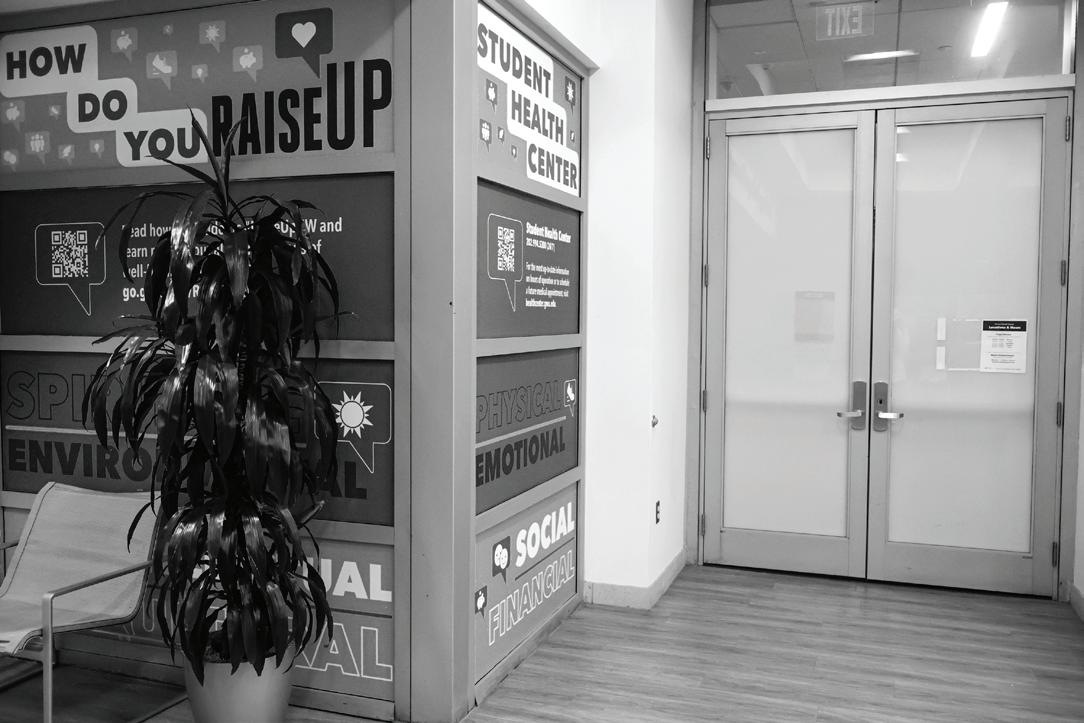
non Campus will also be open from 10 a.m. to 6 p.m. on Mondays only throughout the year, expanding by two hours from last year’s 4 p.m. closure.
Lynne also pledged during his campaign to commission an anonymous survey to identify patterns in student experiences with the SHC and to form a “student advisory board” to provide regular feedback to the center’s leadership.
Lynne announced over the summer that students will be able to preschedule appointments and choose clinicians for counseling and psychological services through their student health portal this fall. Lynne said the change will give students “greater access” to clinician background information by allowing them to preview their area of focus, allowing students to find the right care for them.
SGA senators also unanimously passed two pieces of legislation amending the SGA Constitution at Monday’s meeting.
The first, sponsored by SGA Sen. Sophie Munson (CCAS-U), would add a clause to the constitution prohibiting harassment
among SGA members based on “protected characteristics” like race, gender, sexual orientation, religion and legal status. It also incorporates the GW Code of Student Conduct’s definition of harassment, which bars discrimination on those grounds, into the SGA Constitution.
“Adding this clause to the SGA Constitution would ensure that there is a defined process of what occurs when SGA members experience harassment by other SGA members,” Munson said. Munson’s amendment must be approved by students as a referendum during the SGA elections in April.
The other amendment — cosponsored by SGA Sen. Sofio Kipiani (ESIA-U), the chair of the Women’s Caucus, and SGA Sen. Levi Todd (CPS-G), the Graduate Caucus’s chair — permanently adds one representative from the Women’s Caucus and one from the Graduate Caucus to the Governance and Nominations Committee. The committee oversees SGA constitutional amendments and bylaws and the screening of candidates for Senate vacancies.
ing to the National Library of Medicine. But it remains unclear if rapamycin can also slow the aging process in humans, despite being marketed as such by some doctors and online vendors.
Researchers discovered rapamycin’s anti-aging capabilities when two studies, published in 2006 and 2009, respectively, found that it increased the lifespan of both yeast and mice. Some doctors and health influencers then began touting rapamycin as an anti-aging drug, leading to the drug’s rise in popularity, although no evidence yet exists of rapamycin extending the lifespan of humans.
As part of the study, researchers assigned two groups of healthy older adults with a mean age of 80 to either an experimental or control group. The experimental group received low-dose daily rapamycin therapy, while the control group received a placebo.
Researchers used a phenotypic age calculator — a tool used to measure a patient’s biological age based on biometric data like blood quality — to find the experimental group had an average phenotypic age lower than their chronological age, meaning they appeared younger than they were supposed to be at the studies completion. Researchers were unable to establish if rapamycin was responsible for any “clear benefit” in the experimental group.
Although rapamycin has demonstrated anti-aging effects in multiple organisms, researchers of the drug said that little is known about the potential side effects of the drug in humans and that long-term clinical trials are needed.
Thomas Weichhart, an associate professor at the Medical University of Vienna, said rapamycin has been shown to increase lifespans in all tested organisms, including yeast, worms, flies and mice, according to a study published by the Anatomical Society. Weichhart said these results could also be applicable to humans, but he said “careful” clinical studies are necessary before rapamycin is widely used.
“This remarkable consistency makes researchers hopeful that rapamycin, or related compounds, could promote healthier aging in humans as well,” Weichhart said in an email.
Richard Miller, a professor of pathology at the University of Michigan, said rapamycin’s negative side effects found to be present in mice, like insulin resistance, could “rapidly” make humans patients’ health worse, particularly in patients with preexisting conditions.
“It’s unclear whether, if you gave it to a lot of people over a decade, how many of them would have serious side effects and how many of them might even have lethal side effects,” Miller said.
Granberg earned $815,103 during first six months in office
From Page 1
The University shared GW’s FY2024 Form 990 with The Hatchet after the paper requested it under a policy requiring tax-exempt organizations to provide copies digitally upon request before they’re posted online.
GW’s status as a nonprofit institution requires officials to report its revenues and expenses to the IRS using the Form 990 each fiscal year, which begins July 1 and ends June 30, and includes the compensation of up to 20 current employees who make more than $150,000 a year from GW and “related organizations.” Officials’ compensation on the form is reported by calendar year from January to December, unlike the form, which is reported based on the fiscal year.
Here is a breakdown of the University’s latest public financial disclosure:
Contributions and gifts declined by 26 percent, coinciding with calls to withhold donations
Community donations fell by $36.8 million from FY2023 to FY2024 — from $88.7 million to $51.9 million — according to the form. During the same period, government grants rose by $11.1 million.
GW received its lowest level of donations since FY2019 in FY2024, according to the University’s previous Form 990s. Since FY2020, annual donations have ranged from just over $80 million in FY2021 to nearly $100 million in FY2023, GW’s tax forms show.
McClendon said changes in enrollment, investments, funding and grants can cause fluctuations in figures reported on the form. She said contributions and gifts can fluctuate for a “variety of factors” but did not specify those reasons.
In October 2023, pro-Palestinian students projected anti-Israel and anti-GW messages onto Gelman
Library — including phrases like “Divestment from Zionist genocide now” and “Your tuition is funding genocide in Gaza” — to call on the University to divest from companies tied to Israel, demands echoed during the U-Yard encampment six months later. Over a thousand alumni swiftly responded to the projections by calling on University President Ellen Granberg to formulate a plan for combating antisemitism, also threatening to cease donations and refusing to hire GW students until the University did so.
The University during FY2024 tripled its professional fundraising expenses, which totaled $969,873 — up from $290,287 in FY2023. The University’s total fundraising expenses also saw a roughly 15 percent increase during FY2024, totaling $22.4 million, up from $19.5 million in FY2023.
Granberg makes more than $800,000 in first 6 months of presidency
Officials paid Granberg $815,103 from July 2023 to December 2023, her first six months in office: $684,746 in base compensation, $31,745 in other reportable compensation, $45,500 in retirement and other deferred compensation and $53,112 in nontaxable benefits, per the form.
GW similarly compensated former University President Thomas LeBlanc $797,662 for his first five months in office, which began in August 2017. LeBlanc saw a significant pay hike during his subsequent three years in the role and made at least $1.1 million per year, GW’s tax forms reported at the time. Granberg previously served as provost at the Rochester Institute of Technology from 2018 until she came to GW in August 2023, where she made $577,338 during her last full year in office from January 2022 and December 2022, according to RIT’s FY2023 tax forms.
NICHOLAS WARE | STAFF PHOTOGRAPHER
Charm Thai on L St NW.
COLIN WAGNER | STAFF PHOTOGRAPHER
A pair of students hold hands as they walk toward the entrance of Ross Hall.
KYRA WOOD | ASSISTANT PHOTO EDITOR
The Student Health Center in the University Student Center.
Whether GW expressed interest in entering a voluntary resolution agreement with the Department of Justice. p.1
GW’s student loan task force should prioritize honest guidance over revenue
Over the past decade, unlimited Grad PLUS loans have turned graduate programs into cash cows for universities, driving a nationwide boom in new degrees and marketing campaigns aimed at drawing students to their programs. The incentive for universities was clear: if graduate students could borrow up to their full cost of attendance in federal loans, schools could worry less about high tuition deterring applicants because prospective students wouldn’t be paying directly out of pocket to attend. But, President Donald Trump’s One Big Beautiful Bill will terminate the Grad PLUS program. In response, GW created a task force to identify safe private loan alternatives for students. As the task force navigates this shifting landscape, its recommendations should prioritize students’ longterm interests over retaining enrollment numbers.
The Big Beautiful Bill, signed into law by Trump in July, will eliminate the Grad PLUS program and cap unsubsidized federal loans for many graduate students at $20,500 per year, with a lifetime limit of $100,000. For professional degrees, the cap rises to $50,000 annually and $200,000 total — thresholds that many law and medical students routinely exceed. Universities like GW — which offers more than 230 master’s, doctoral and certificate programs and enrolls over 13,000 students — can’t afford to see its graduate student enrollment slip, as those programs rake in 23 percent of GW’s total operating revenue. In light of the Grad PLUS cancellation, it’s understandable why GW will push prospective students to turn to the private loan market.
Trump’s decision comes after the Grad PLUS Program, launched in 2006, contributed to rising inter-
International students like me are often viewed by people back home as symbols of success abroad and celebrated here as evidence of GW’s global reach. From a distance, the life looks enviable: classrooms in D.C., friendships across cultures and a chance to live at the center of the world. But there is another truth: the endless paperwork, the quiet loneliness, the constant work of adjusting. During my time at GW, I’ve been held to multiple, often contradictory, stereotypes. In classrooms, peers and professors regularly expect me to be the spokesperson for an entire country. In one political science seminar, for example, a professor turned to me mid-discussion and asked, “So what do Pakistanis think about this?” as if I could speak for all the people back home.
Duaa Hussain Opinions Writer
At other times, the opposite assumption has surfaced: that I don’t belong here at all. Once, I told a student she looked pretty and she gasped, exclaiming, “Oh my god, you speak English?” as if colonization hadn’t already ensured that most international students grew up bilingual at the very least. These repeated moments flatten me into symbols: either the polished poster child of diversity or the perpetual outsider fumbling to catch up. Neither

| STAFF CARTOONIST STAFF EDITORIAL
est in graduate degrees over the last decade because students could take out as much as they needed to attend school. The number of students who earned a master’s degree in the U.S. rose 16 percent between the 2011-12 and 2021-22 academic years, with program offerings at private nonprofit universities nearly doubling between 2004 and 2022. GW launched the Rev Up campaign to boost graduate student enrollment after a 9 percent drop over six years. Now, officials join other universities in scrambling to keep graduate student enrollment high by ensuring students find alternative funding options. The student loan task force will meet throughout the fall semester and propose a plan by December detailing how students can navi-
gate the private loan market and avoid these “predatory groups,” Vice Provost for Enrollment and Student Success Jay Goff told the Faculty Senate earlier this month. While we understand GW’s current financial predicament — which will only be exacerbated by the end of the Grad PLUS program — we urge the task force and the University to take a student-first approach and recognize the looming financial burdens for students. Their recommendations must help students not only navigate the private loan market but also assess when taking on that debt is truly worth it. They should also take into account that for many students, private loans won’t be a viable option. And without federal programs in place to set a benchmark, private
The quiet challenges of international students
leaves space for the layered, complicated reality of who I really am.
In those moments, I am no longer Duaa — I become a stereotype made flesh. I am both hypervisible and invisible at once, noticed for what I represent but rarely for who I actually am.
Even when I’ve worked just as hard, I feel like I’m quietly proving to professors, classmates and sometimes myself that I deserve my seat. It means I expend twice the energy others do: rereading readings, scripting comments, staying three steps ahead. Because if I stumble, it won’t just be “me” who looks unprepared, it will be the international student, the Pakistani, the Muslim. The weight of that expectation makes every misstep feel like it reflects not only on me but on the community I’m seen to represent.
I celebrate my wins here while I miss weddings, funerals and birthdays at home. Here, I dressed alone in my dorm and ate takeout on my bed while scrolling through photos of my family celebrating without me.
I have also scrolled through my phone watching crises unfold from thousands of miles away, unable to do anything but worry. When Pakistan flooded last year, I stayed up all night refreshing Twitter, guilty that I was safe in D.C., while people I loved were wading through water.
Every year is shadowed by paperwork, embassy visits and expiration dates for visas or forms. I also con-
stantly live with the hum of uncertainty, the knowledge that my life here can be undone by one policy change or consular decision. My right to remain is never guaranteed, and that makes even stability feel temporary.
I’ve learned to carry the stress and isolation by finding little ways to make life feel normal. I call my family every day, even if it’s just for five minutes in between classes. I cook the foods I miss when I can or track down restaurants that taste close enough like Shinwari. I lean on my international friends, we trade visa horror stories and share snacks from home. I’ve also found comfort in people who don’t treat me like a spokesperson, who just see me as Duaa.
My advice to other international students is this: Don’t isolate yourself. Find people who make space for the real you. Keep small rituals from home alive. And give yourself grace — you don’t have to perform gratitude every second — you’re allowed to admit it’s hard. Belonging doesn’t happen all at once, but you build it piece by piece.
I love studying here. It is one of the greatest gifts of my life..Behind every polished statistic of “global diversity” is a student carrying both pride and pain across oceans, weaving joy together with sacrifice, learning how to belong in two worlds at once.
—Duaa Hussain, a junior majoring in political science and creative writing, is an opinions writer.
Ilenders have little incentive to keep rates competitive, making it easier to take advantage of vulnerable borrowers. Currently, about 38.2 percent of people in the U.S. have a poor or fair credit score, a figure that’s even higher in low- and moderate-income neighborhoods, particularly in Black, Hispanic and Native American communities. In recent years, GW has taken steps to diversify its student body, like boosting first-generation and lowincome student enrollment and going test-optional to remove barriers for underrepresented groups. As GW’s task force develops a plan, it also must not lose sight of the University’s mission of diversity and inclusion, especially at a time when DEI in higher education is under federal scrutiny. We recognize
that GW may not be able to lower tuition, but we urge the task force to focus on helping students understand which degrees offer longterm financial value. If the University does have room to reassess tuition, we urge them to consider reducing rates for programs where the return on investment is particularly low. For example, increasing the discount for certain programs within GW’s Grad2Grad program ain enrollment in these programs.
As officials navigate a yearslong budget deficit, it’s no surprise they’re focused on retaining as many graduate students as possible as they evaluate the feasibility of some programs. It’s a shaky time for higher education finances, and it’s understandable that GW is focused on stabilizing its revenue. But it must acknowledge the magnitude of the investment students make when pursuing graduate school.
Many students take on mounting debt for careers that may never generate enough income to pay that money back. With some private loan interest rates reaching as high as 26 percent, borrowing can be especially damaging or entirely inaccessible for students entering lower-paying fields. That’s why GW should provide honest guidance to students about the financial risks of certain degrees. In the task force and broader University discussions about graduate schools, we urge GW to include the voices and experiences of graduate students and professors. It’s commendable that the University responded quickly to an issue affecting so many graduate students. While we recognize that maintaining enrollment is vital for GW’s financial health, we hope the task force and officials at large will prioritize a student-centered approach.
Class of 2029, resist the urge to use AI for your humanities work
n today’s age, getting the most out of your education is complicated by technological advances, like generative artificial intelligence. Those shortcuts are tempting but undermine your education and could hinder future job opportunities. When you use generative AI to complete work, you are training it to take the creative jobs you and your peers are seeking.
Ava Hurwitz Contributing Opinions Editor
In the artistic realm, it has become difficult to tell the difference between generative AI and reality, which devalues their work and undermines the trust we put in creative minds. The more data people feed generative AI, the more intelligence it gains. This is known as “machine learning” or the ability of generative AI to mimic human behavior. If someone prompts the generative AI to create art or write for them, the system learns and can accurately replicate it. In a world where generative AI is so easily available to students, with some universities building their own bots, generative AI ends up undermining the authentic human work at our disposal.
One current example is the movie topping both Netflix and music charts worldwide: K-Pop Demon Hunters. One viral tweet
claims that the songs from K-Pop Demon Hunters were AI-generated and that the industry will soon be dominated by AI due to the movie’s immense success. Because Netflix has generated AI content in the past and people have readily used it online, many were ready to jump to the conclusion that a show that was this successful could only ever be generated by AI. But that severely erodes the artistic capabilities of the artists and producers of the show who spent almost a decade creating this series.
Generative AI is convenient and easy to use, which is why so many people jump to use it without thinking of the implications for the future. For example, there was the Studio Ghibli craze late last year. Insert any photo into ChatGPT or any generative AI program, and ask it to turn it into Ghibli style — hand-drawn, warm and organic animation — and it would spit out a cute art piece. Generative AI didn’t inherently know what “Studio Ghibli” meant but people, mostly Generation Z students, fed it examples until it could mimic the subtle traits that made the style unique. Over time, the line between the authentic Ghibli works and the AI imitations blurred. It isn’t just artists, either. This impacts the entire humanities curriculum. If people continue to feed AI the hard work of writers and thinkers, the livelihoods of those individuals will
become obsolete. As was the case with K-Pop Demon Hunters, even authentic art or writing will be put into question. Imagine a history graduate who spent years developing a nuanced thesis on colonialism, only for AI to churn out a simplified version of their argument in seconds. AI makes entire fields of study look replaceable.
Generative AI can be a useful tool to help you study for exams or find sources for a paper, but it is important to know when to stop. Students shouldn’t be feeding generative AI creative prompts that help it improve in the long run. Some GW students have already taken action against using generative AI to create art. The Corcoran School of the Arts & Design was met with backlash from students after officials used the tool to generate posters for student stage productions. Follow in their footsteps, and commission an actual artist to recreate that adorable photo of you and your friends in Studio Ghibli style — there’s a surplus of talented student creators here at GW. To all the first-years who are reading this, I have two pieces of advice. First, avoid using generative AI for creative purposes. Second, get on Netflix and turn on K-Pop Demon Hunters. I promise human creative minds will never disappoint.
—Ava Hurwitz, a sophomore majoring in international affairs, is the contributing opinions editor.
ABBY TURNER
GAMES SPORTS
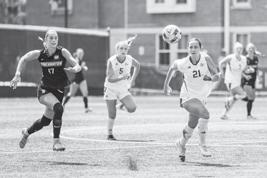

Volleyball sets sights on A-10 Championship, back-to-back winning seasons
BEN SPITALNY SENIOR SPORTS EDITOR
As volleyball nears the start of their season this week, senior middle blocker Cianna Tejada thinks her team has “all the pieces” to have a successful season.
The Revolutionaries were picked fifth in the preseason Atlantic 10 poll out of 10 teams, which would match last year’s fifth-place finish in the conference with a 9-9 record, 19-13 overall. Tejada said she is optimistic about her team’s chances, adding that they’ve worked throughout the summer to develop a faster-paced offense, more consistent serving and durable defense.
“The bar is raised every day in the gym,” Tejada said. The team opens their season on Friday with their first nine matches being played in D.C., seven in the Smith Center and two away against crosstown rivalries — Howard and American universities.
Last year, the team won 3-0 against Howard and lost 1-3 against American early in their season, both matchups being played at home in the Smith Center. The loss against American was their lone misstep in their first five matches and one of only four at home the whole season. It was the team’s most successful season under the leadership of Head Coach Katie Reifert, who’s been at the helm since 2022.
The team also enjoyed a hot streak to start conference play in October, opening their A-10 slate to a 5-1 record before a five-match losing streak.
After finishing last year with a .594 winning percentage, the Revs have the opportunity to secure backto-back years of records over .500 — an accomplishment they haven’t secured since 2015. Tejada said that the team’s off-the-court trust and togetherness will be a key boon for the team’s play if they can translate it into their matches.
Sophomore outside Taylor Treahy said playing in a new environment against different teams will help them adjust to unfamiliar environments, as opposed to local schools that they’ve played in previous seasons. With that added experience of adjusting on the fly, the team will be greater prepared to tackle unexpected hiccups as the season unfolds.
This offseason, the team lost a few key contributors, with first and third place leaders in kills A-10 AllConference honoree Salem Yohannes and MC Daubendiek, respectively, both graduating. Treahy, who earned a spot on the A-10 All-Rookie Team last year, highlighted the team’s focus on serving this offseason, saying it was a rough spot for last year’s
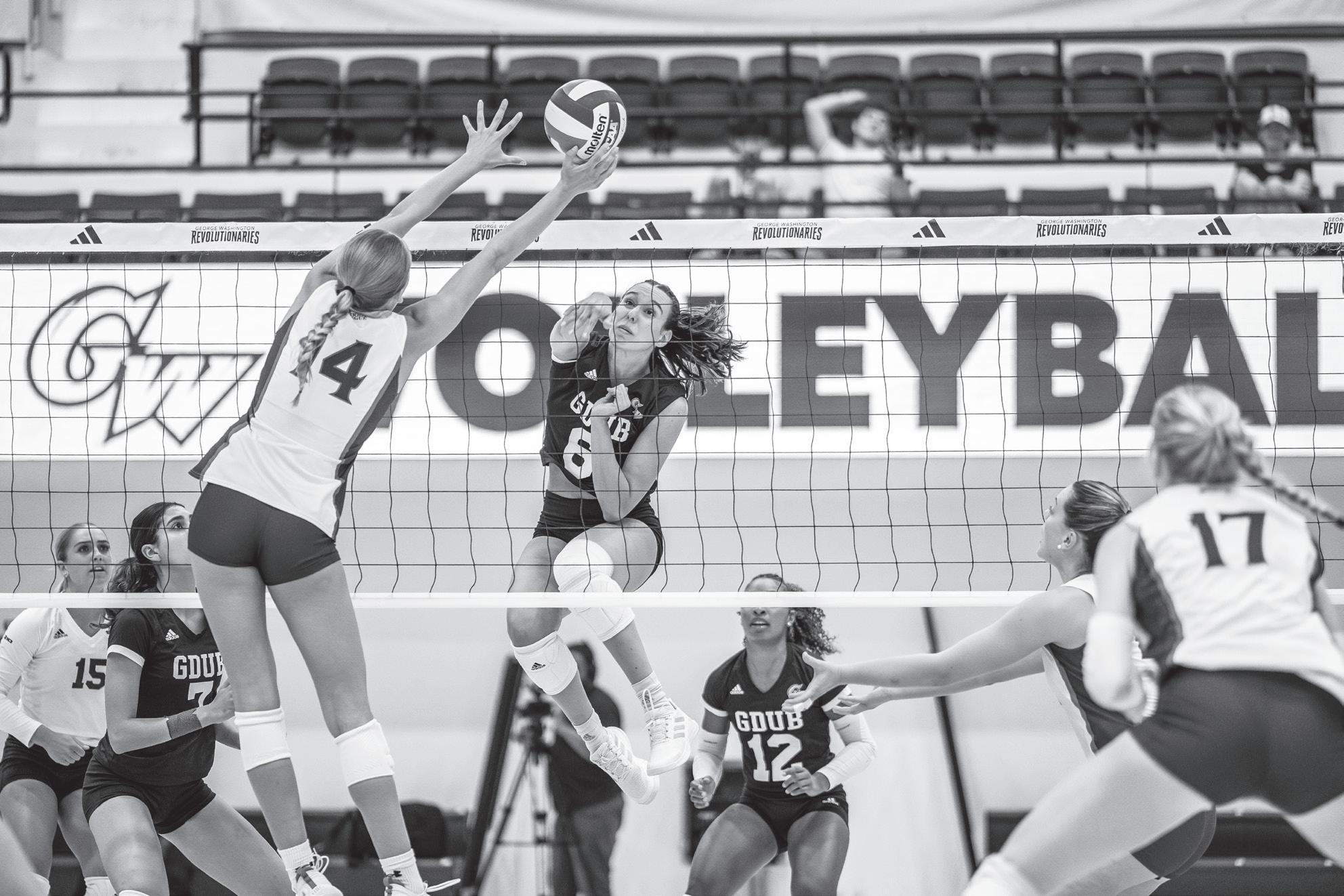
team. In conference play last season, GW was sixth in the A-10 with 1.63 aces per match and had 362 service errors.
“We’ve been doing a lot of serving,” Treahy said. Tejada said the team has been working on their offensive tempo this season, looking to gain consistency and speed. “We’ve also
been putting a really big emphasis on getting our middles involved, especially in not-perfect situations,” Tejada said. “[Reifert] loves that. It’s definitely keeping a consistent tempo and a faster tempo to kind of be able to beat the block.”
“Defense has been a huge highlight. I think we’re
finally starting to see the payoff of that and getting used to each other making big plays,” Tejada said. With their season set to begin on Friday, Treahy said she has a clear ambition for the team — winning the A-10 Championship, something the Revs haven’t done since 2000.
Professional Australian goalkeeper gets ball rolling on GW career
One of women’s soccer’s freshest faces has yet to start her first collegiate match, but the keeper has already racked up international and professional experience.
Freshman goalkeeper Jasmine Black, who hails from Sydney, Australia, arrived in Foggy Bottom earlier this month after playing for 3 seasons at professional women’s soccer team Sydney FC. Her team won the league championship in 2023 and 2024 and was also selected to the Young Matildas — Australia’s Under-20 squad — in July, where she came off the bench for her first U20 international minutes.
She started five matches in the 2024-25 season for Sydney FC, pitching three clean sheets and 19 saves on the season.
Black is the only Revolutionary on the team to make an international roster. Sophomore defender Julia Bilal participated in U.S. Training Center in 2018.
“I always wanted to come to
the States,” Black said. “I think they invest so much in women’s [soccer] — it was such a huge opportunity.”
Black said while soccer and schooling are often separate in Australia, she knew she wanted to be a student-athlete at the collegiate level in the U.S. from a young age because of the college environment here. Black said she considered staying at Sydney FC and continuing to play at the professional level, but that she wanted to pursue the opportunity to get a college degree in a new country while still receiving personalized training from coaches.
“I always knew I was gonna try something else, and if it doesn’t work out, I can always go back to the A-League, so it’ll always be there,” Black said.
Despite being in a professional league, Black said she did most of the outreach during the college recruiting period, sending about 100 emails to coaches in the process.
She said she chose GW because she is interested in international affairs and was impressed by
Assistant Coach Alan Fread’s experience coaching high-level goalkeepers. Fread coached Manchester United goalkeeper Phallon Tullis-Joyce, who is now on the American national team, during his time at the University of Miami in 2018.
Black landed in D.C. on August 13 after the successful international qualifier and a 16-hour journey from Sydney, just in time for the Revs’ first two official matches. Sophomore goalkeeper Katie Silverstein started both of those matches, playing all 180 minutes, as Black said she probably isn’t yet physically fit enough to play.
She said she’s still getting adjusted to GW’s turf fields— soccer is typically played on grass in Australia — and the 14hour time difference. Despite those adjustments, Black said the American collegiate environment is similar to the Australian professional playing realm given the in-depth preparation for matches and at times includes even more film study to prepare for
opposing teams’ tendencies.
“I think it’s a really professional setup, considering it’s college and considered amateur,” Black said. “It’s quite similar to being pro — even at pro we wouldn’t really do scout, sit down in an auditorium and go through it.”
She said Australia’s A-League — which includes Sydney FC — isn’t “as good” as the United States’ professional women’s league because they don’t scout as intensely. Unlike the NWSL, which includes top-tier players who have graduated from college, Black said the A-League often includes highschool-aged athletes like herself.
Black said she missed a lot of training for school when attending Redlands School in Sydney and playing for Sydney FC simultaneously.
“I’d miss a lot of stuff to go to school, or I’d go to school really late and leave early and then miss a lot of school for away trips and stuff,” she said.
While the Revs were playing their first two exhibition matches
Men’s soccer splits opening games, hopes to spark turnaround
Following back-to-back challenging seasons, men’s soccer (1-1) is working to rebuild momentum and reshape its identity in the Atlantic 10.
After finishing second-to-last in the A-10 with a 2-5-1 record in 2023 and a 1-6-1 go-around in 2024, Head Coach Craig Jones is focusing on building stronger team cohesion during the preseason. Now in his 14th year, Jones said he has been impressed with the team’s energy and pace, adding that he’s seen improvements on both the team’s offense and defense.
Ahead of the season, GW was picked last out of the 13 A-10 teams in the annual preseason poll, which is voted on by the conference’s head coaches. But Jones thinks the team can move past its recent history and is optimistic about their chances for a winning record this season.
“There’s going to be games that we’re the best team, and we don’t win — that’s soccer sometimes — but I think over the course of a season with the group that we have, we can certainly win more than we don’t win this year,” Jones said.
The team opened their season with a 0-2 nonconference loss at Old Dominion University on Thursday, after a faltering secondhalf defense saw ODU score twice within 10 minutes toward the end of the match. The Revolutionaries bounced back with a 3-1 win over Binghamton University on Sunday,
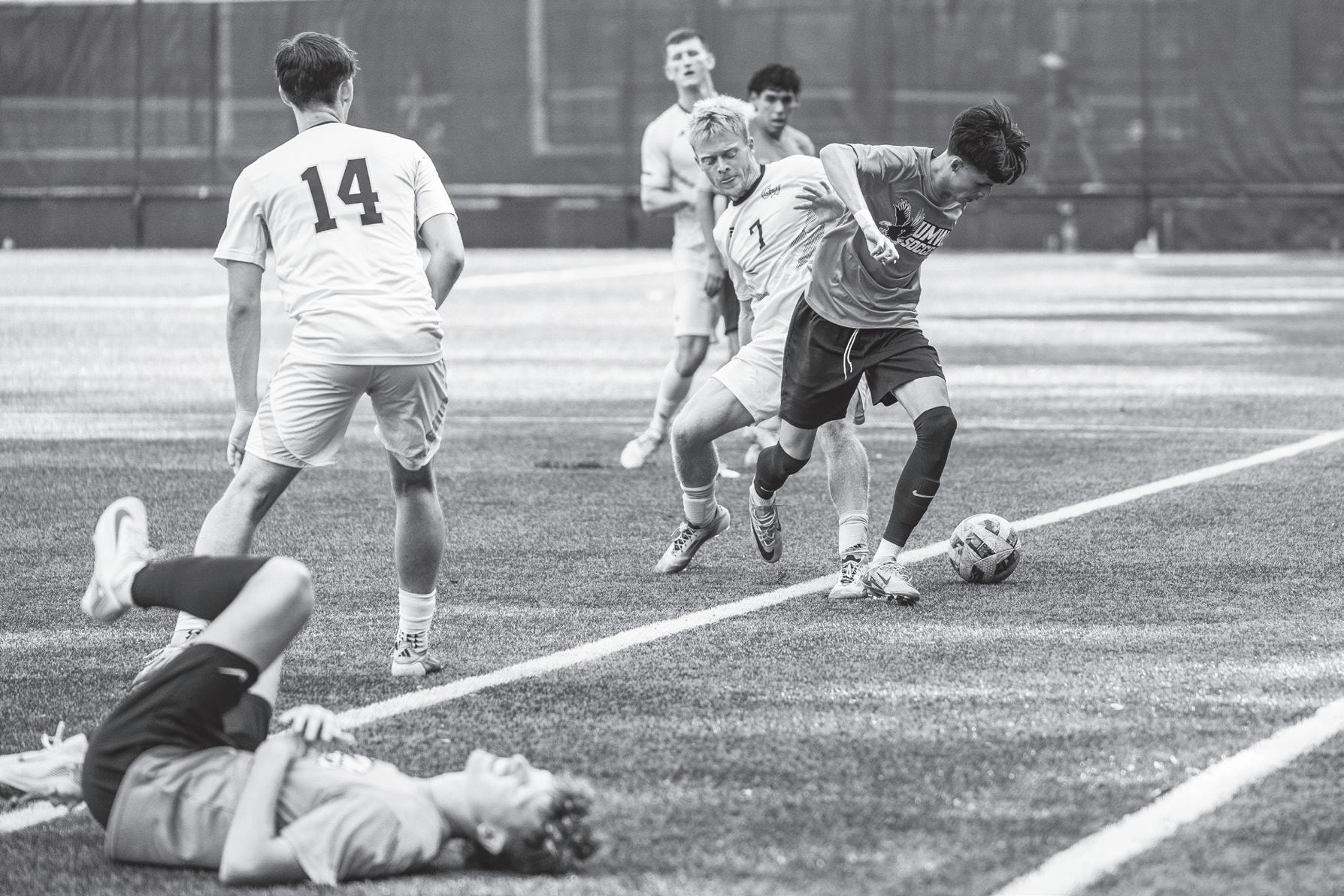
with sophomore forward Louis Crofts scoring two of GW’s goals. In his first year last season, Crofts led the team in goal scoring with five. Jones said he’s excited about the group that he’s assembled and is confident in their ability to execute.
“Some of the guys that we brought in, we think can have an instant impact in some of those areas to
make us certainly more effective on both sides of the ball to be successful this year,” Jones said. Jones said he’s looking to restore a “fire” in the returners, while incorporating the new arrivals. He said they’ve had discussions about what it takes to win — executing the game plan. After officials canceled their first
exhibition match against Virginia Military Institute on Aug. 13 during the middle of the game because of storms, the team played an exhibition match against American University on Aug. 15, losing 3-4, then tied Mary Washington University 1-1 on Aug. 17. Junior midfielder Nico Medina said the team’s offense was “more
“Our goal is to win A-10 Championships this year,” Treahy said. “And I think like what [Tejada] said, we do have all the pieces, and it’s just like continuing to grow and continuing to stay bought in with each other and stick with each other through the ups and downs this preseason to get there.”
earlier in August, Black was playing with the Young Matildas in Tajikistan, where they competed in the Asian Cup Qualifiers. During the trip, the Young Matildas won all three contests, qualifying for the Asian Cup, which will be held in Thailand in April. Black was subbed on in the 80th minute in the final contest against Chinese Taipei.
Black said she enjoys playing in the international squad because she gets to travel and play with her best friends. She said the recent trip to Tajikistan felt similar to D.C.
“It actually kind of reminds me of D.C. It has a lot of, like, huge monuments that’s very similar to here,” Black said.
Black said her national team coach and Revs Head Coach Jeremy Williams are in close contact about the timing of international camps and will have to decide whether it makes sense for her to attend those camps in the lead up to the Asian Cup.
“’I’m excited for college life in general, being in a new country — in D.C.,” Black said.
dangerous” than in previous seasons in the game against American University, scoring three goals. Medina said they showed determination after initially being down 3-0, pushing through and responding with three of their goals of their own to prevent a wipeout.
“I remember against AU we were going three-nil down, and then we ended up coming back around and up 4-3,” Medina said. The Revs only won two conference fixtures in 2023, and just one in 2024 against Saint Joseph’s. Jones said while he can provide position analysis and scout opposing teams, it’s ultimately up to the players to reverse the results of the last couple of seasons.
“It comes down to the players, right?” Jones said. “Even the guys who are returning, they’re coming from successful youth backgrounds. It’s not like they’ve never won. They know what it takes to win.”
The Revs will play nonconference games up until Sept. 20, when conference play opens with a home game against Fordham. Last year, the Rams finished fourth in the conference, while the Revs finished 13th. The Revs then will face two nonconference matches in New Jersey in early September — one against Rider University on Sep. 1 in Lawrenceville, then Saint Peter’s University on Sep. 5 in Jersey City.
Last season, the Revs gave up an A-10 high 48 goals on the season and scored the second least in the A-10 with 15 goals.
JAMES SCHAAP | STAFF PHOTOGRAPHER
Senior forward Alex Nicholson
JAMES SCHAAP | STAFF PHOTOGRAPHER
Senior middle blocker Cianna Tejada hits the ball during a game last year.








WELCOME BACK GUIDE







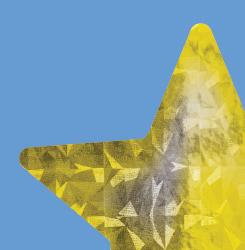


Whether you once called it home or just passed through its bustling doors, every GW student knows Thurston Hall as the pulse of freshman year — its lounges are always filled, nights constantly vibrate with earlyaughts anthems bleeding through the building’s thin walls and seas of all-toofamiliar faces parade across the dining hall.
On the first Friday night of the semester, we, too, wandered about the first-year epicenter from 10 p.m. until 2 a.m. Here’s what we saw.
10 p.m.
As we made our way toward the eastern edge of campus, we immediately encountered a group of students with red solo cups in hand, eagerly waiting for an Uber to pick them up, perhaps for the night’s first-year party at Phantom Lounge. We initially sat ourselves in the first-floor lobby to observe the swarms of students filtering in and out that were just starting their night.
A few lingering parents lugged carts brimming with hangers and ottomans to the elevator.
After 20 minutes, we decided to travel up and down

the floors of the building. The floors were quieter than we anticipated — but at around 10:30 p.m., we overheard two students from down the hall:
“We’re heading to one of the welcome week parties, bro,” one said. “We need college IDs, though!” the other responded. “I doubt they’re checking,” he said back — a rebuttal that upperclassmen would likely rebuke.
After sitting at a secondfloor table for about 20 minutes without seeing much action, we went up to the 10th floor penthouse, where around 20 students chatted calmly while playing board games, and an acoustic guitar rested by a window.
Opting for a more upbeat vibe, we headed back outside to a table as a GW Safe Ride van picked up a group of students. “I’ve known her since yesterday, but we’re best friends,” someone said while waiting for a ride.
11 p.m.
“I can’t believe we found ou“I can’t believe we found our way back,” someone said as they walked toward the lobby.
As we sat at our tried and true table outside, we witnessed students returning from what could possibly be their first CVS runs in Foggy Bottom, plastic bags in hand.
As people were either going to bed or embarking on their adventurous nights out, there was a lull in activity.
Then, at around 11:20 p.m., a cry of “You need to get drunk right now!” could be heard down the street from a group of guys on the corner.
As we reached our halfway mark, we decided what we needed was some subsistence to get us through the long night ahead, so we took a walk to the Western Market CVS.
Midnight
Armed with Doritos, iced tea and a Diet Coke to fuel us for the rest of the night, we sat back down at our familiar outside table. With Carvings boxes in hand, a few groups of students began to trickle back into their new home. But other groups of first-years were just starting their night, some outside waiting for their Ubers with big plans, one saying, “We will be up. The night is still so young.”
Wanting a change of scenery, we decided to check out Carvings and pay homage to The Hatchet’s stakeout last year. Students eagerly lined up inside as the smell of fried food wafted in the air, ordering mozzarella sticks, fries and chicken strips to snack on as their nights ended.
After returning to our main location, we headed up to the penthouse again. A similar size crowd from earlier in the evening, with some post-club groups trickling in, students discussed a range of topics – if they took
the SAT or ACT, how many AP classes they took in high school and how many siblings they have.
In hopes of grabbing some fresh air to wake us up as we approached our last hour, we headed back outside. Students were starting to find their footing, picking up on the reputation of their dorm, one remarking, “I think this is the most social dorm.”
1 a.m.
After being eaten alive by mosquitoes, we decided to take some time indoors.
The alert security guard at the front desk was constantly reminding students to tap in.
While taking a quick lap around the third floor, a frantic student was trying to get into their dorm. Hair supplies in hand and furiously tapping their phone against the scanner, they told us they were locked out of their dorm. We directed the fearful first-year to the facilities number to help unlock the door right before it reached 1:30 a.m.
We sat back outside as our night came to an end, seeing one student run to an









On the first Friday of the semester, we staked out Thurston Hall


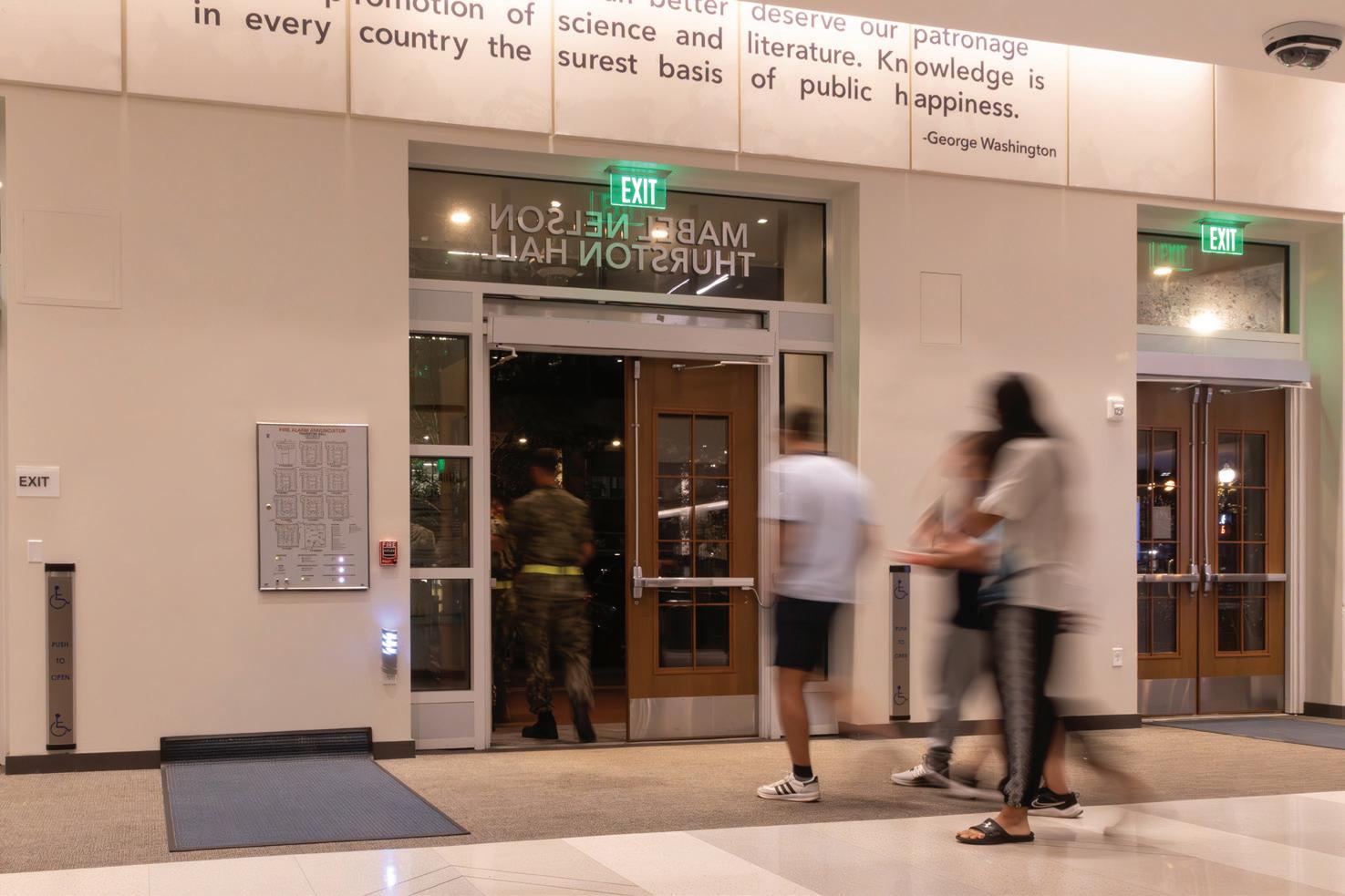




Uber Eats delivery driver to receive their Taco Bell and some couples holding hands as they entered Thurston. With slurred speech, one student told their new friend that they “really need to try a Lime scooter sober.” As one student almost fell off their Lime bike, we decided it was our cue to exit. With all of its awkward quirks and never-ending introductions, we left our stakeout glad that we will never have to experience a first night of freshman year again — but oh, what a time it was.







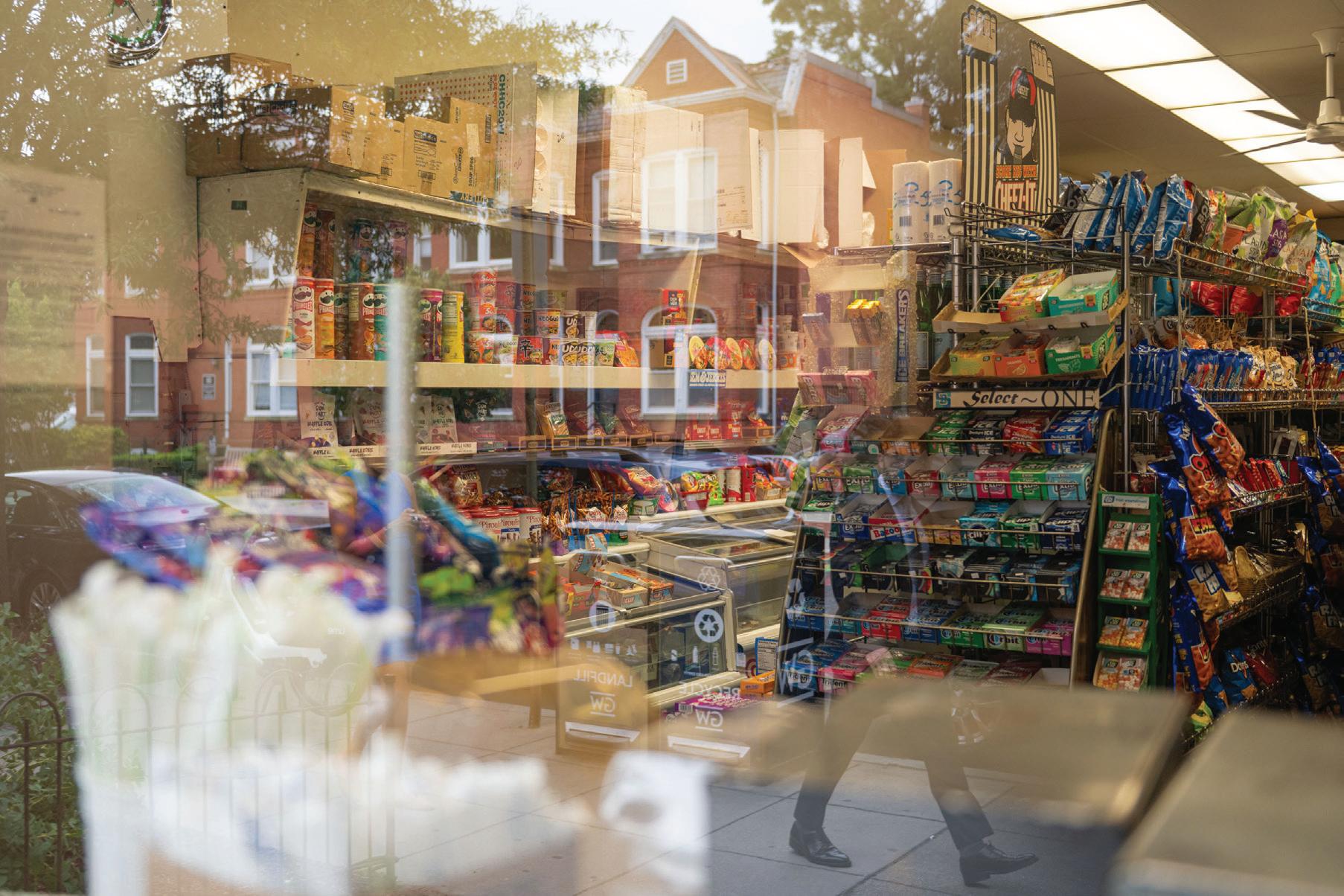

The smell of fresh bagels paired with the image of packed aisles and lines out the door are familiar to every GW student who enters the GW Deli. Those hallmark sights and sounds are celebrating 80 years on campus this year.
Most GW students have come to regard a GW Deli bacon, egg and cheese as a weekend essential, whether it’s needed to satisfy a craving, get over a rough hangover or just to grab breakfast with friends — the deli has endured eight decades of Foggy Bottom and GW history, while other businesses have come and gone. While students are familiar with the deli’s sandwich and snack offerings, they might not know its history as what Owner John Ambrogi calls an “American family story.” Ambrogi said because his father lived through the Great Depression and World War I, his family elected to save money and invest it into the business that would come to make its mark on the GW community.
“He was an amazing businessman, a very smart man,” Ambrogi said. “He loved people, it was part of the reason he opened up this business. He loved people and he loved the business. And I kind of took over his dream — almost accidentally — I thought I was only going to be here a few years.”
After his father purchased the store, Ambrogi said his dad added a deli and sandwich counter, which would eventually become the reason for the infamous lines forming out the door. He said the location
within GW has been, and continues to be, important to the business’ success in building a clientele and that a hush falls over the shop when students leave for the summer.
Ambrogi said after graduating from George Mason University in 1982, he decided to work at the deli for his father while figuring out his next career move, but the career he found at the deli stuck. Working in the deli was a family affair — he said his two older brothers helped run the store, along with his mother, who worked the kitchen, and with his father, Leo Ambrogi.
Ambrogi said his mother retired in 2003, and his father passed away in 2004. He added that his son, Matt, has now worked alongside him for about 11 years and that he considers him the “engine” of the business, as he works at the cash register, stocks products, does paperwork and interacts with customers.
Ambrogi said the main reason the business has been stable for 80 years is its reliable employees, some of whom he said have been working day in and day out for over 20 years. He said the staff must know the recipes and pricing for the extensive menu.
Ambrogi added that he has had a “wonderful clientele” over the years that is great to speak to when they pop in, ranging from students and professors to State Department employees.
Ambrogi said products the deli carries have changed over the years as consumer tastes have changed and new items have emerged, including a surge of “power bars” and energy drinks, like Celsius and Monster Energy, becoming top

No matter how many welcome-to-GW events you attend, Reddit forums you read or virtual tours you take, the unknowns and what-ifs of college life can seem impossible to figure out on your own.
Here are some pieces of advice to help you through your first year at GW.
Love thy neighbor –









sellers. Of all the products that jam the shelves of the store, he said, the deli’s staple — its sandwiches — haven’t changed one bit in 80 years as the Ambrogis continue to prioritize high quality meats and ingredients.
Today, students have the options of products like instant ramen bowls, tins of rolled wafers, Clif Bars and bottles of Brisk lemonade that line the shelves, waiting for students to decide which option suits their fancy.
Senior Stephen Garvey said he started to go to the deli his sophomore year after seeing long lines of students waiting outside, and now he typically goes on Saturdays to get a sausage, egg and cheese sandwich on a sub roll.
Ambrogi said he is aware of the long lines students encounter when they are craving a bagel sandwich on a Saturday morning. He said he wished he could do something to tackle slimming down the lines, but if he added one more employee in the kitchen to the “perfect amount” he already has, it would most likely slow down operations.
He said he gets to know the more extroverted students who are regulars as well as the new crop of students that enter GW each year, making for a microcosm of community at the University.
“This type of place is the kind of place where you can come in a couple times a day, and you can come in and feel relaxed about coming in two or three times, getting some coffee and a snack, getting your lunch, stopping and getting drinks or grabbing something real quick,” Ambrogi said.

Sydney Heise, Sports Columnist















Advice on classes, commutes, companions

After swearing over IKEA furniture instructions and sweating through a hectic movein, the time had finally come. My family huddled silently in the cramped room we had just spent a tense weekend furnishing, and tearful goodbyes revealed our feelings . I opened my phone to an Instagram message from a tall, Southern girl I’d met during online orientation meetings over the summer asking me to join a “pre” before the Buff and Blue kickoff event that night.




















grade was a whole letter lower — I had forgotten to do the final. Starting college is a huge adjustment, and doing so while juggling six different syllabi made it all the more difficult. Test the waters, make time for yourself and a life outside of academics.
Make time for the commute – Ryan Saenz, Assistant News Editor





After a moment of contemplation, I walked down the hall and knocked on her door where I was greeted by six smiling — though just as uncertain — girls who I still call my closest companions at GW.
I was lucky to go through the trials and tribulations of my first year and beyond with girls who lived down the hall, but you can find your people anywhere — at the bench press at the gym or on Mount Vernon Express joyrides. So if you’re reading this while crying on your twin XL — get up and knock on the door next to yours. You never know who’s waiting on the other side.
Don’t be overambitious –


Andrea MendozaMelchor, Opinions Editor
My first semester, I excitedly took six classes, naively thinking throwing myself right into a full schedule would be perfectly doable, but I was burnt out from studying, homesick and sleeping about four hours a night.





























It was all-nighter after allnighter — and when I submitted my last final, I felt I had successfully survived my first semester at GW. Or so I thought. Once back at home, I was catching up on some muchneeded sleep when my professor emailed that final grades had been posted. That’s when I checked Blackboard, and my





























During my first semester, I thought a 55-minute break in between my French class in Foggy Bottom and University Writing class on the Mount Vernon Campus would be the optimal time to grab an afternoon snack. But after retrieving my chocolate croissant from the Gelman Starbucks, no amount of speed walking, jaywalking or sometimes flat-out running would get me to Tompkins and the Vex in time for my UW. The mad dash continued on the road, with the Vex weaving in and out of traffic. The end result: the walk of shame into UW class, often arriving up to 15 minutes late.

















Save yourthe awkward stroll into your class and the embarrassment of searching for a seat — often in the front row — while your professor lectures, and make time for your commute to class. Take advantage of free merch – Anusha Trivedi, Sta Writer
When you first set foot onto the campus that will be your home for the next four years, it can be tempting to splurge at the campus store and display your school spirit. But hold back, exercise restraint.
















You’ll find endless opportunities to grab free merch instead of dropping your textbook funds on expensive GW garb. Events like Midnight Breakfast are a goldmine of free apparel. When I attended the Columbian College of Arts & Sciences orientation assembly my freshman year, I wasn’t interested in the sunglasses they were giving away. But when the event transitioned into a Kahoot! game based on GW trivia, I ended up in first place — earning me a hat as a prize. Two years later on sunny days in Foggy Bottom, I still walk around campus with my head protected and wallet intact, knowing I didn’t drop $30 on something I ended up getting for free.













DIANA ANOS CULTURE EDITOR
COOPER TYKSINSKI | ASSISTANT PHOTO EDITOR Students exit Thurston Hall late Saturday night.
GW HATCHET STAFF DIANA
The GW Deli celebrates its 80th anniversary.








WELCOME BACK GUIDE


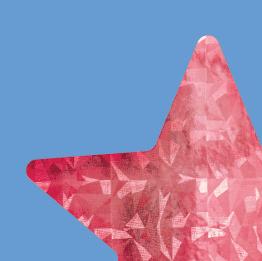









From the Romans to rovers, explore GW’s niche course offerings

After falling in love with “Ulysses” by James Joyce at age 17, writer and adjunct professor Samuel Ashworth knew he wanted to one day teach a class dedicated to the seminal novel — now, his course is one of many specialized classes offered at GW. With add-drop period in full swing, many available courses offer hyper-specific dives into outof-the-ordinary topics. Professors and students from these classes said by registering for an atypical elective or two, students can seize the opportunity to expand the breadth of their education, applying knowledge from other sectors toward their career goals and explore interests beyond their specific major requirements during their undergraduate years.
The University’s fall schedule of classes houses an eclectic range of electives from departments across disciplines. Options range from Washington, D.C. in the history of punk rock music to sociology of the sex industry.
Ashworth said he developed James Joyce and Ulysses, which is being offered for the first time this semester, after he heard about other classes offered through the English department that centered around “slow reading.” He said “Ulysses” is a book that requires a full semester and is best read

In clipped montages of study materials strewn across tables soundtracked to Taylor Swift songs and snippets of lo-fi pop, student influencers are helping elevate GW’s online image.
Capitalizing on Generation Z’s reliance on the platform to receive their news and their addiction to scrolling, GW’s student influencers have built a space that introduces incoming students to campus culture, university life and D.C.’s hidden gems.
Marwa Medjahed — a junior studying international affairs with over 113,000 followers on her account “marwaindc” — said posting on TikTok has given her social and career opportunities she never would have had if not for her platform.
“Being a college student, I come from a lower income, first-generation background, I would have never been able to just casually go to a Michelin star restaurant,” Medjahed said. “But getting that invitation and that kind of experience, that means a lot to me.”
What started as posting “aesthetic” study videos using pastel-colored journals in coffee shops with trending sounds in high school soon adapted to short-form content about her college life when she came to D.C. for her freshman year.
Now her videos highlight study spots, coffee shops and restaurants around the District, which she said frequently reach
communally.
“The joy of a Joyce class is, really, when you have 15 people all reading it together, that’s 15 brains full of information that they are bringing to bear on the material,” he said. “And they’ll see things that other people won’t see.”
Ashworth said distinctive courses like his are offered through every department and are focused on subjects that professors are fascinated by, despite not fitting “neatly” into a specific major or requirement. He said the opportunity to deep dive into these topics, like a specific novel or musical genre, in a classroom setting diminishes postgrad, and students should take the opportunity to explore their niche interests as undergraduates.
“The more offbeat, weird passion courses you can take now, the more you will be grateful that you did decades from now,” he said.
Ashworth said he hopes this class, which recently filled its 15 seats but has 40 available waitlist spots, will help students find meaning in the book through analysis, creative writing imitations and studying corresponding scholarly materials — especially for non-English students.
Elise Friedland, professor of Ancient Art of the Roman Empire since 2008, said students who take the course as an elective are often happy to have it as an aspect of their “general humanities educa-





Untangle options, save cash on DC’s arts scene


On a campus adjacent to D.C.’s overwhelming art scene, it’s only natural for students to want to cram world-class art experiences into their already busy schedules, but it can take a bit of digging to uncover college students’ best options. As crowds pack theaters and galleries, and lights rise on stars like Iggy Pop and Addison Rae this fall, the fear of missing out on nights to remember can creep in due to student budgets and ever-growing ticket fees. The internet is overflowing with tips and tricks to get the best price for all things artsy — but we’ve compiled what we think are the best options for students.
Theater


out to her with inquiries about paid partnerships and brand deals, offering to pay her between $500 to $2,000 per video. She said this style allows her to showcase campus life and the city while also challenging the perception that GW students are isolated or lack school spirit, as seen in discussions on online platforms, like Reddit. Through posting short videos of students milling about on campus or showcasing nearby




tion” because it helps them understand and contextualize historically significant artwork.
She said one former student from her Ancient Art of the Bronze Age and Greece class sent her an email after visiting the Louvre in Paris letting her know how helpful the course was in both understanding and appreciating the displayed art.
Friedland said taking an art history class helps students to learn visual literacy, a skill that is necessary for interpreting art of all mediums and time periods. She said Ancient Art of the Roman Empire, which has six open seats, includes recent discoveries and discourse and helps students to recognize Roman influences in the modern world.
Outside of the humanities, economics professor Vincy Fon teaches economics of Outer Space, a class Fon said, as far as she knows, does not exist elsewhere. She said the course, which has five openings for the Tuesdays and Thursdays section, outlines the history of space exploration and its financial technicalities, a topic she started exploring during the COVID-19 pandemic after wanting to teach something new.
“The field is not well developed, and I need to write some papers to get other economists interested in it,” Fon said. “So it is actually a course to help them think through some current events.”
Although the prowess anAlthough the prowess and elegance of the Kennedy Center can seem out of reach due to steep ticket prices, the center offers student discounts through its MyTix program, with tickets typically priced between $10-20 instead of standard pricing that can reach over $140 per ticket. Tickets are released on Mondays, two weeks before each performance. While the white marble exterior of the Folger Library and Theater mirrors the style of the nearby Capitol and Library of Congress, the dark wood paneling and low-lit interior transports visitors to a bygone era of the District. The theater offers 10 percent discounts for students, special discounts for first-time visitors and a pay-what-you-will option, where audience members can snag last minute tickets at the box office up to two hours before curtain on a first-come first-serve basis.
Music
The Anthem on the Wharf is



attractions like shops in Georgetown and events at the Capitol, she hopes to promote the positives of studying at GW.
Senior marketing student Troi Davis, who has racked up more than 6,500 followers on her TikTok account “troixtroi,” said she seeks to fill the void she felt as a freshman without a college role model through her TikTok page, giving advice to incoming students at GW, showcasing her fa-

Art



vorite beauty products and posting clips of her life as a college student. Her page acts as a landing page for girls to come together and learn from someone who has years of college experience under her belt. Those videos catapulted Davis onto Essence Magazine Girls United’s “Creator Radar” this month, which highlights rising Black college and post-grad creators to watch out for. In an attempt to guide


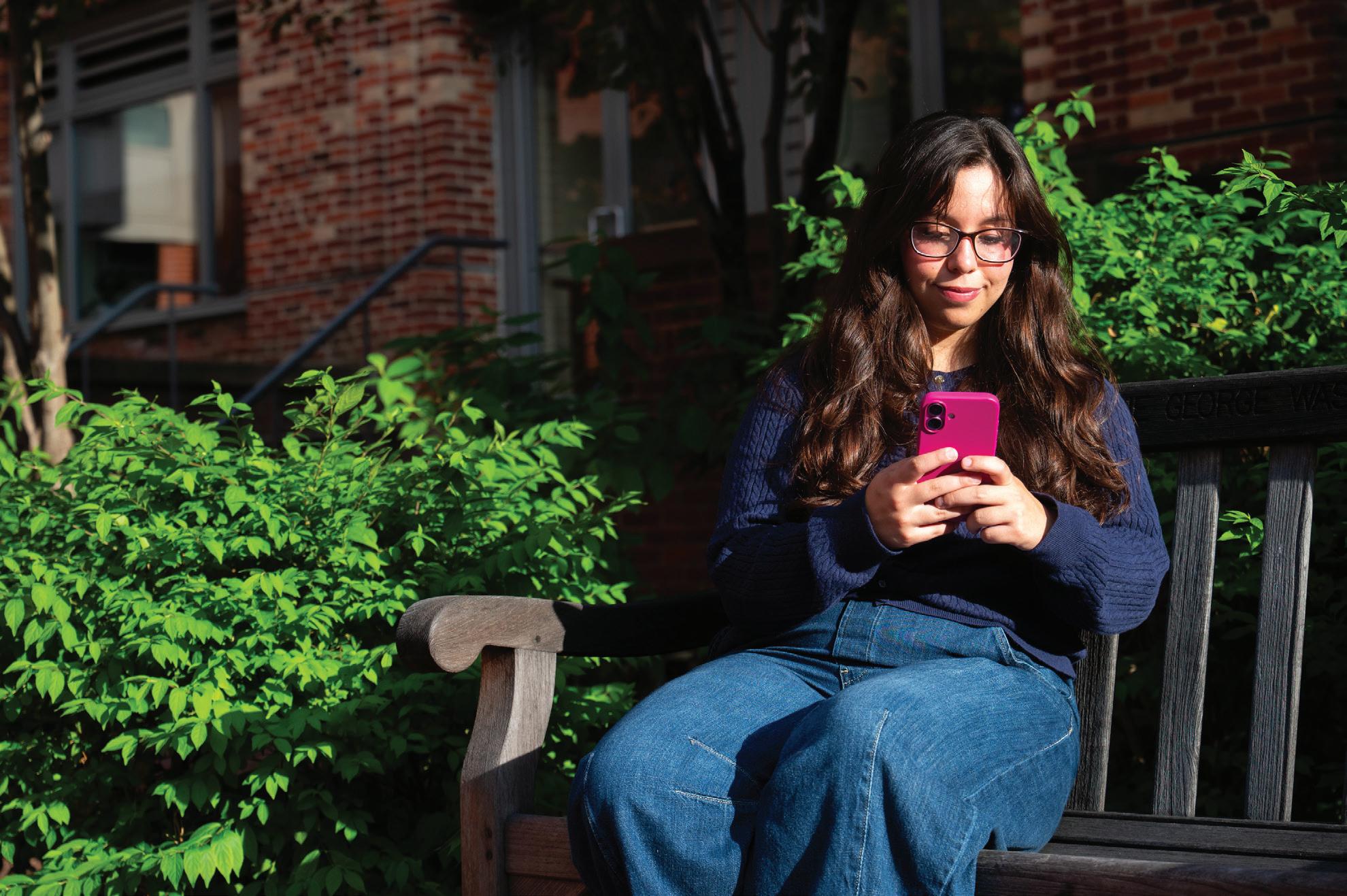
the next generation of college girls, Davis this summer launched a “College Girlie Bootcamp” series on her TikTok account, where she offers advice to incoming students, ranging from how to take care of your hair in a dorm room and what to wear to go out to how to make money as a college student.
Davis said she started the series after she received a flood of direct messages and comments from stu-



















slated to host performers ranging from indie and alt band Magdalena Bay to big names like Lorde this fall. One trick to avoid tickets selling out due to online sales and online Ticketmaster fees, which can add up to 75 percent of the original price of the ticket, is to buy tickets in person at the box office, located outside of the Anthem and open every day from noon to 7 p.m.
Students can also spend Labor Day on the U.S. Capitol’s West Lawn listening to a free concert by the renowned National Symphony Orchestra, led by Principal Pops Conductor Steven Reineke. Under a white-tented stage, musicians perform pieces ranging from classic orchestral music to familiar movie soundtracks. Seating under the tents is first come, first serve, and the music begins at 8 p.m.
Located just one block from Metro Center, the National Museum of Women in the Arts specializes in celebrating the works of female artists. Tickets are always free for visitors under 21, as well as on Community Days that occur on the first Sunday and second Wednesday of every month. The museum’s collection includes the works of over 1,000 female artists, including Frida Kahlo and Margaret Tafoya, a potter who used her Native American tradition to influence her works.
The Phillips Collection, located in DuPont Circle, is a modern art museum situated inside the family’s mansion, boasting historical architecture, while maintaining a personal atmosphere. Tickets are $10 each for university students. If you would rather spend the $10 on an overpriced latte, you can visit for free from 4 to 8 p.m. on the third Thursday of each month.
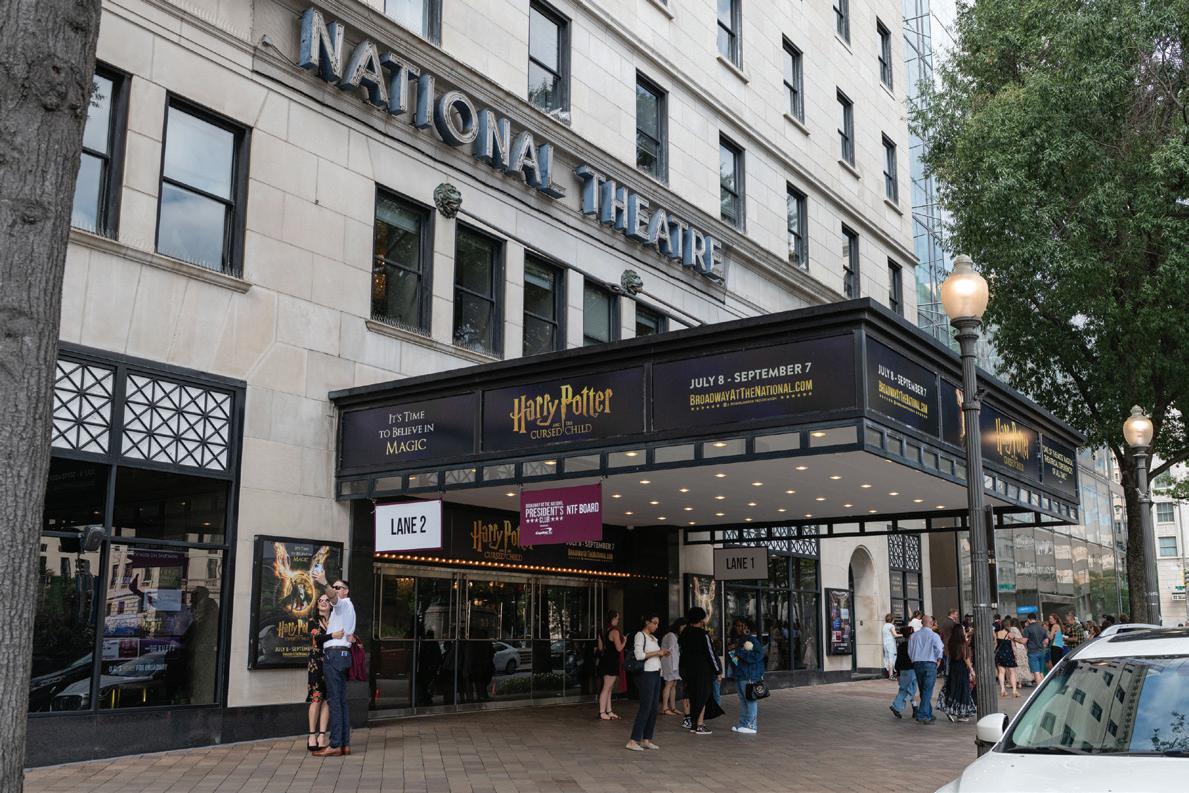
dents asking about her experience at GW. Although she said the sheer amount of messages she gets can be overwhelming, she tries her best to answer everyone to help ease their transition into college life, acting as a digital big sister.
Davis’ account largely consists of lifestyle content with videos ranging from beauty and skincare reviews to life as a college student in D.C. Davis said after her first video about internet personality Trisha Paytas went viral on TikTok last June and gained almost 7 million views, nearly 5,000 people began following her. She said she now focuses on creating content targeted at her audience of young girls looking for beauty and life advice while also helping them navigate the collegiate scene.
Maya Rosado, a junior studying journalism and mass communications, said after a video in March 2023 garnered over 64,000 views about general advice for incoming freshmen about how to navigate campus and where to go out in D.C., she started to gear her account “maya_rosa05” toward more GW-centric content with room tours and day-in-the-life-style videos.
“It’s helped me a lot honestly,” Rosado said. “Currently I’m doing marketing, and I’m an intern at a beauty company, and I think I really got this job because I was able to send her TikToks and stuff that I made in videos and then also just within classes in SMPA.”
KAIDEN J. YU | STAFF PHOTOGRAPHER
PHOTO ILLUSTRATION BY COOPER TYKSINSKI
related to niche classes at GW, including a celestial chart, Greek classics and David Bowie vinyls.
MAGGIE CRISP REPORTER
ARWEN CLEMENS | SENIOR PHOTO EDITOR
Marwa Medjahed sits on a bench in University Yard while scrolling on TikTok.
